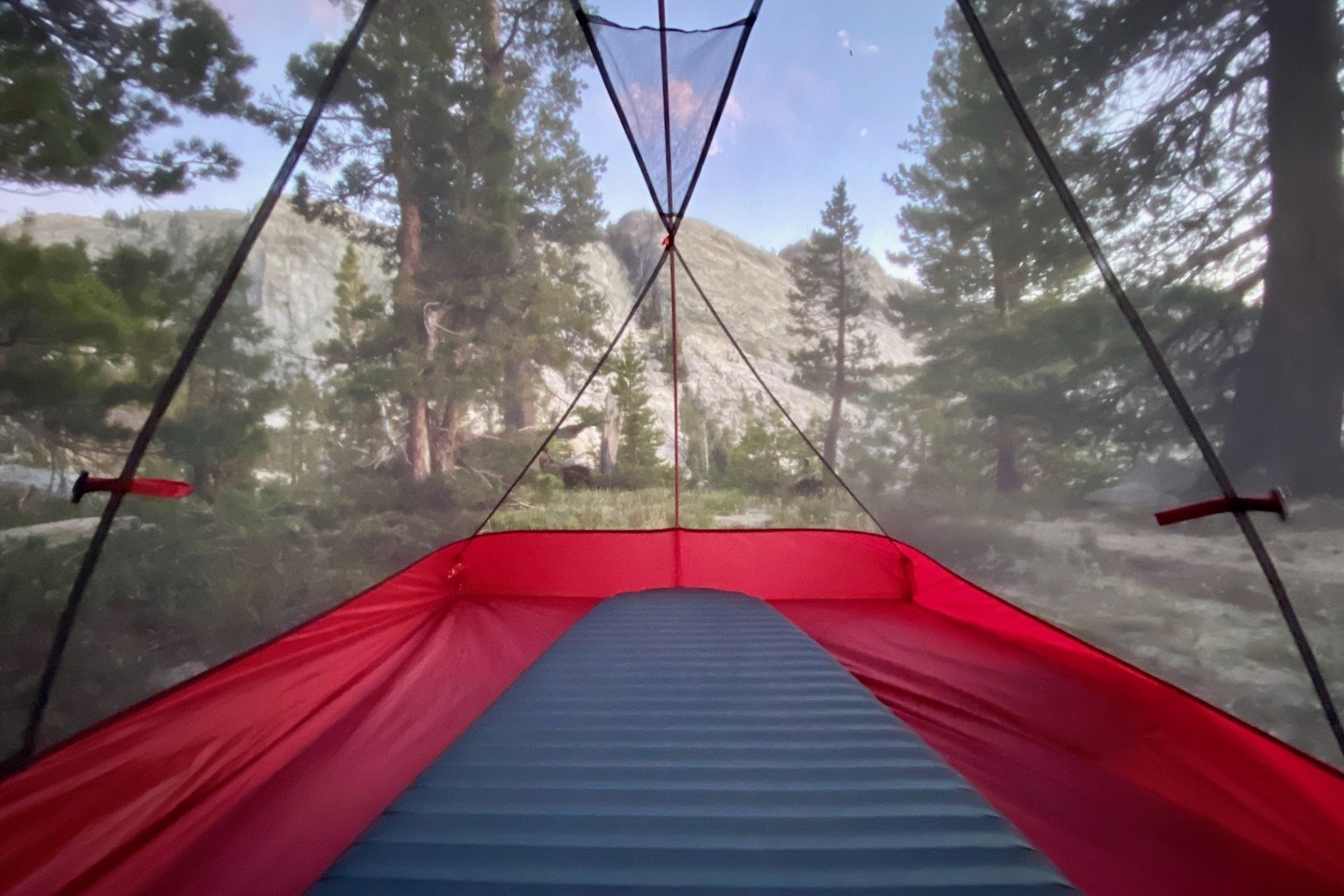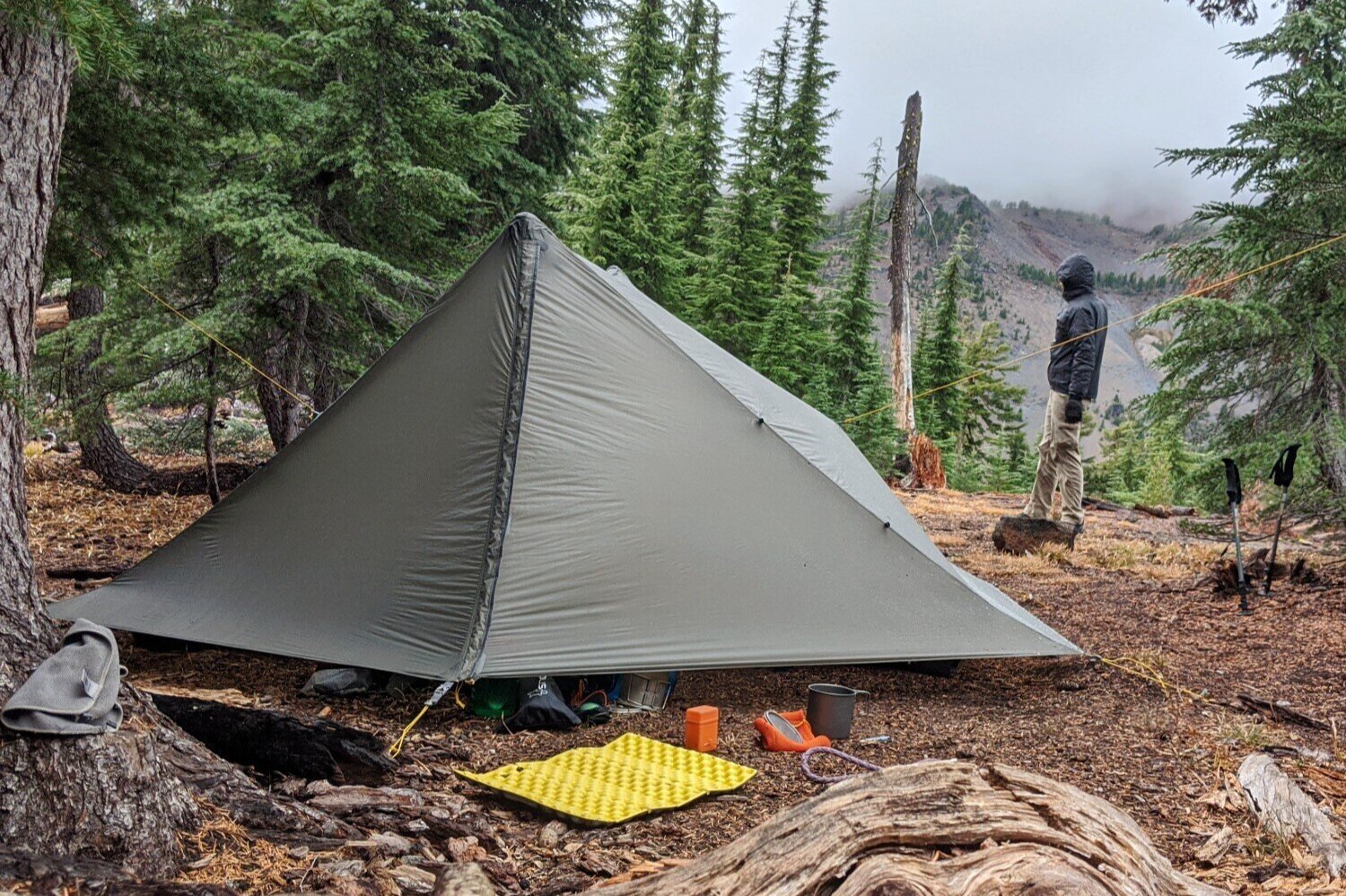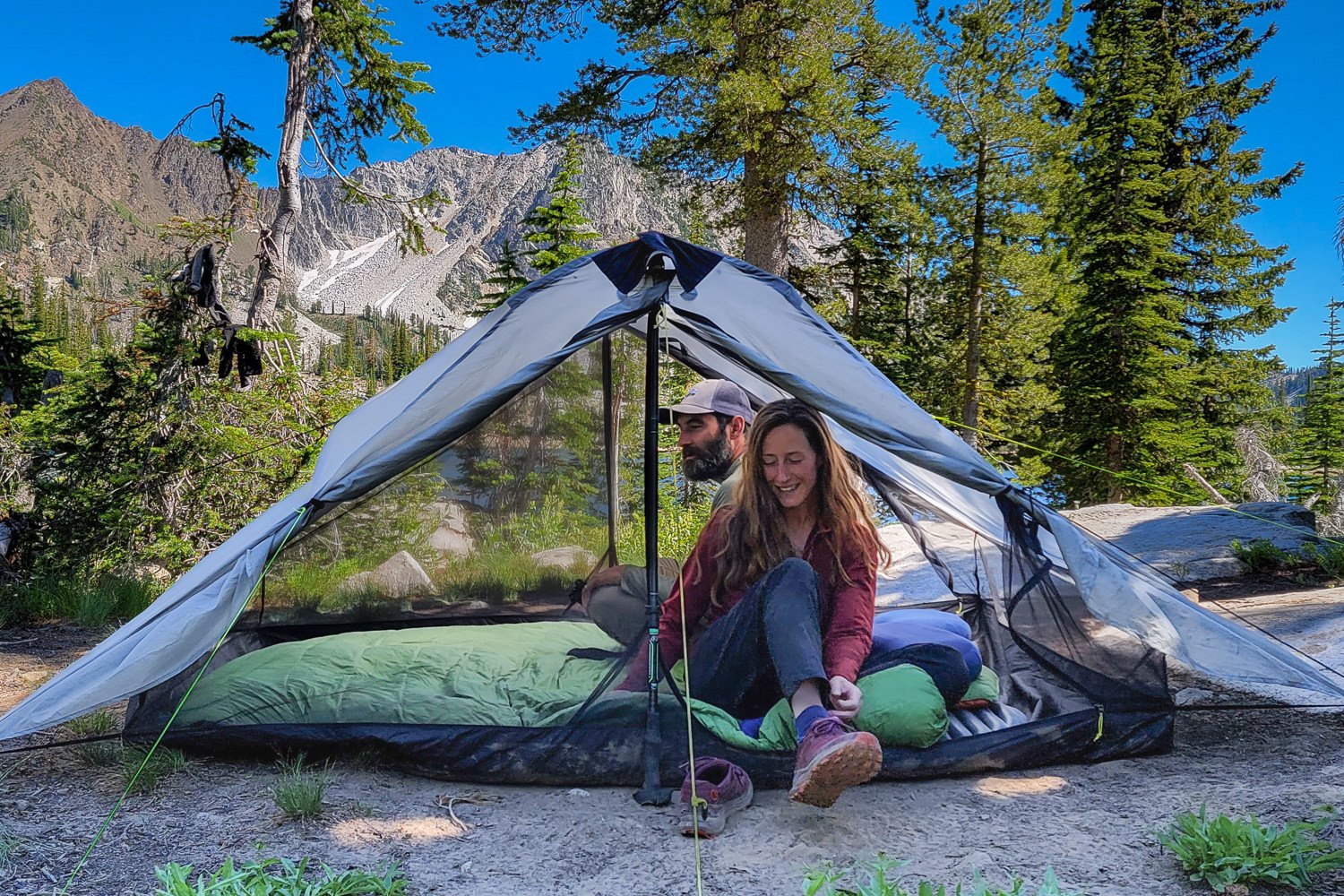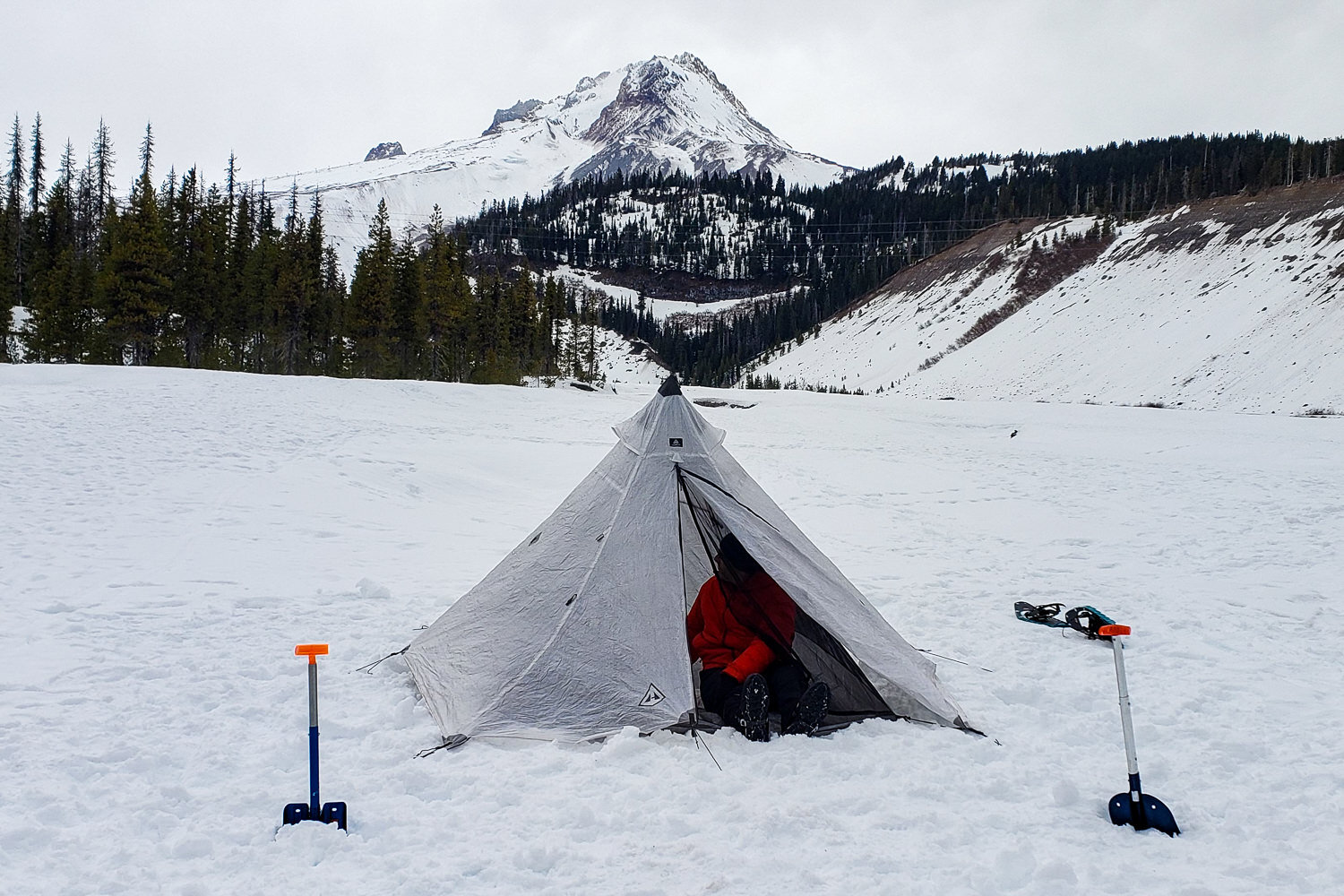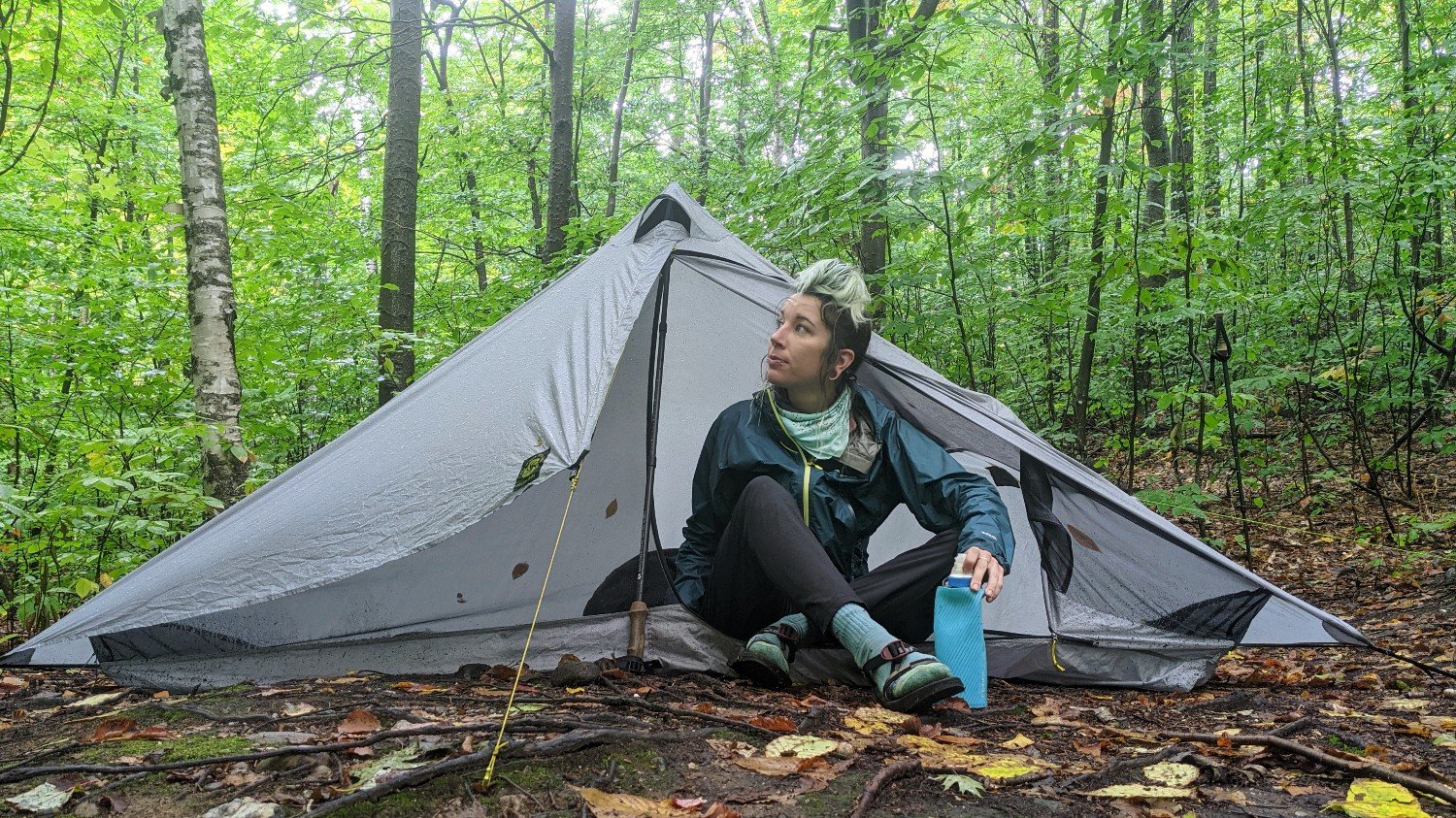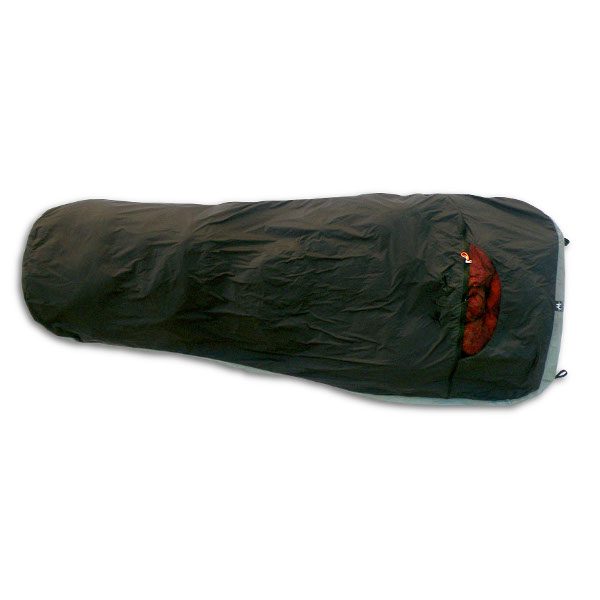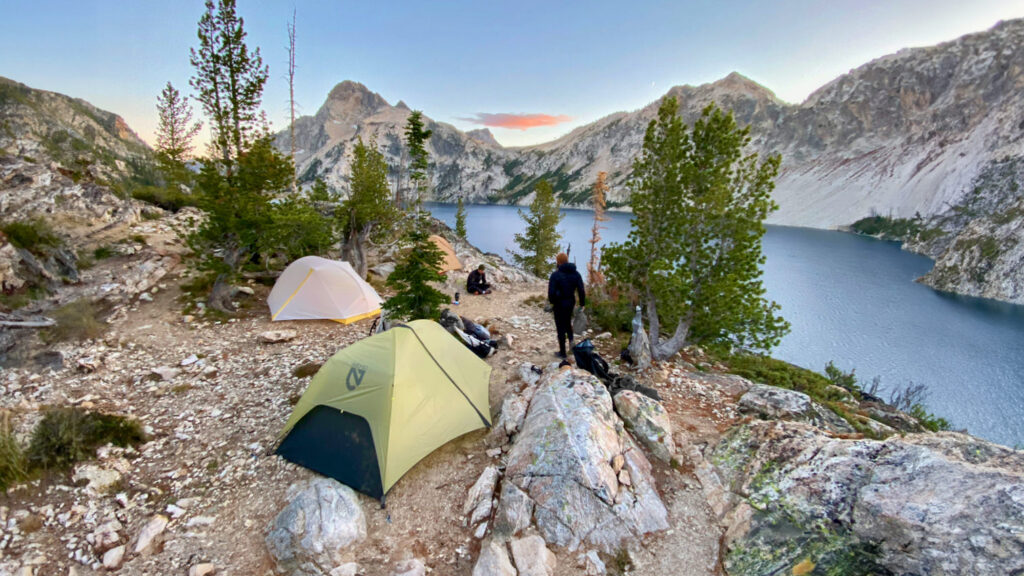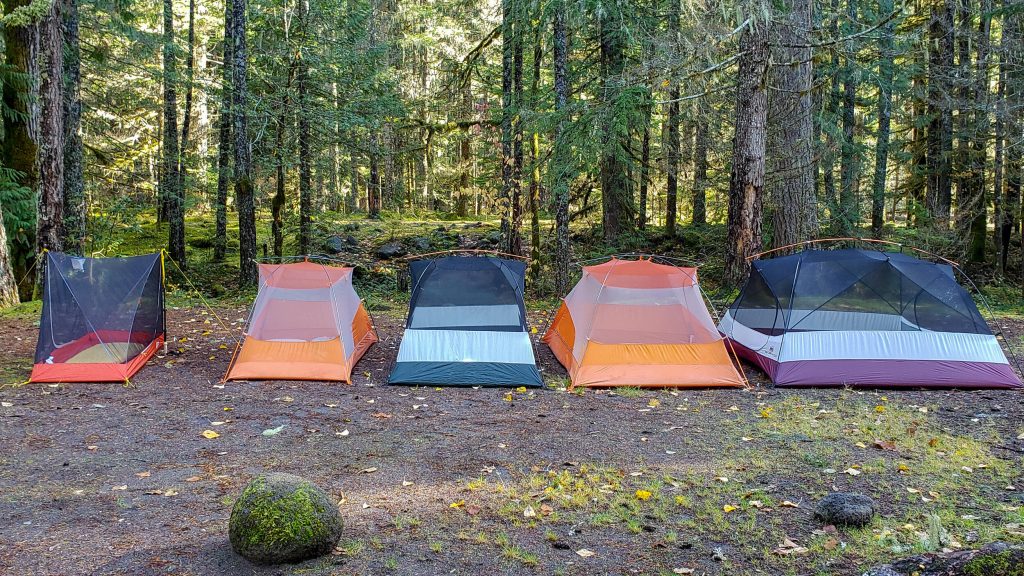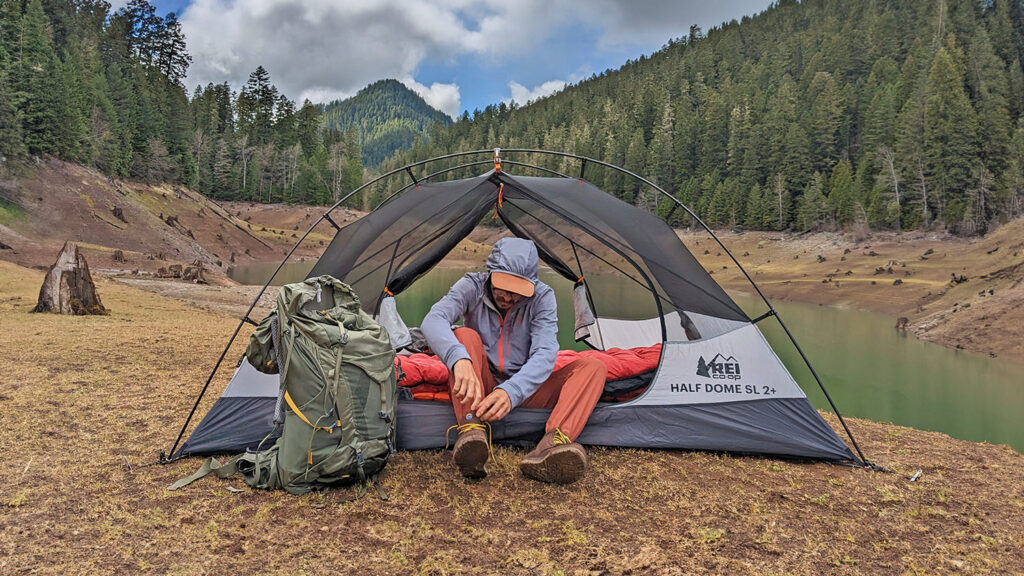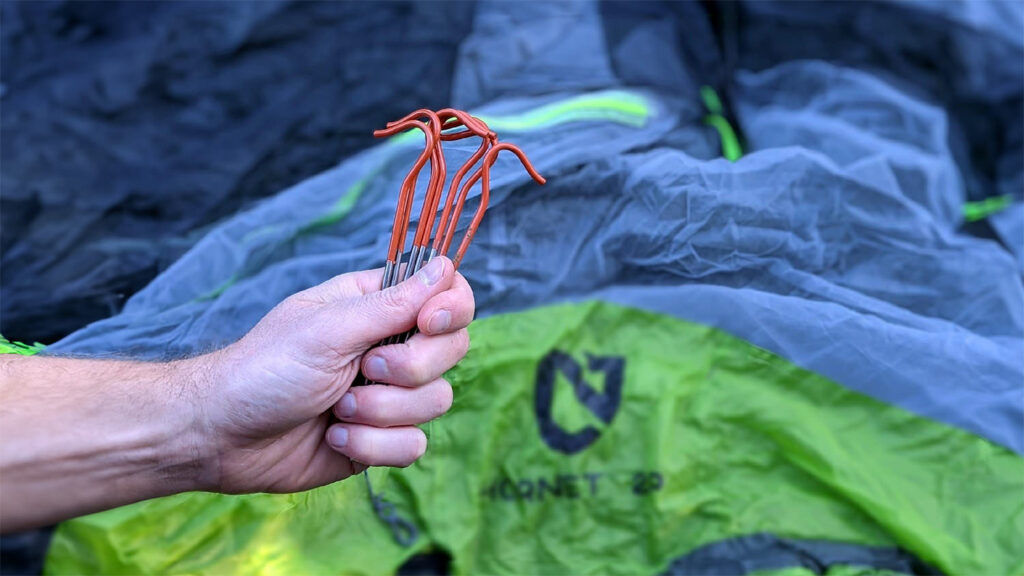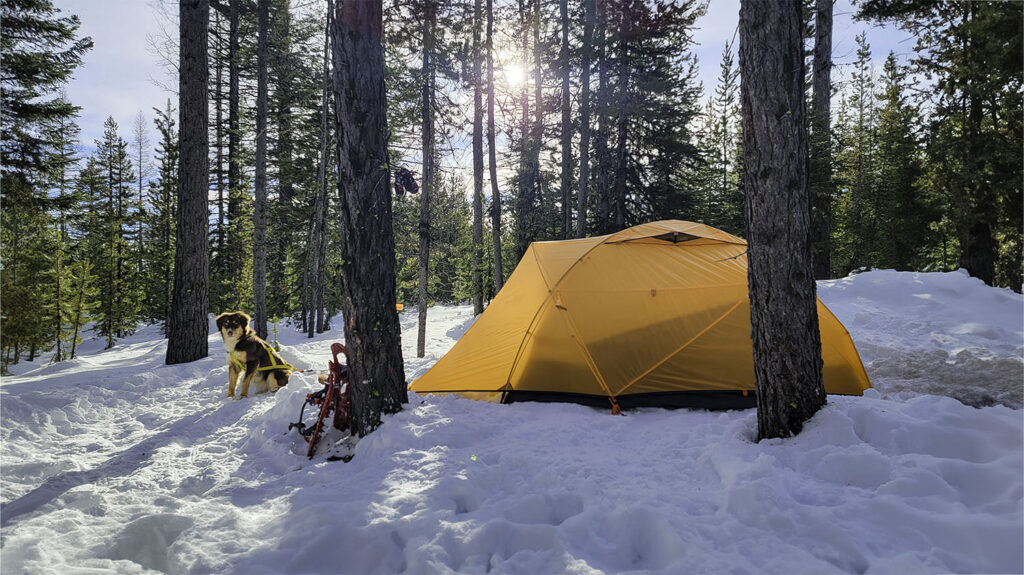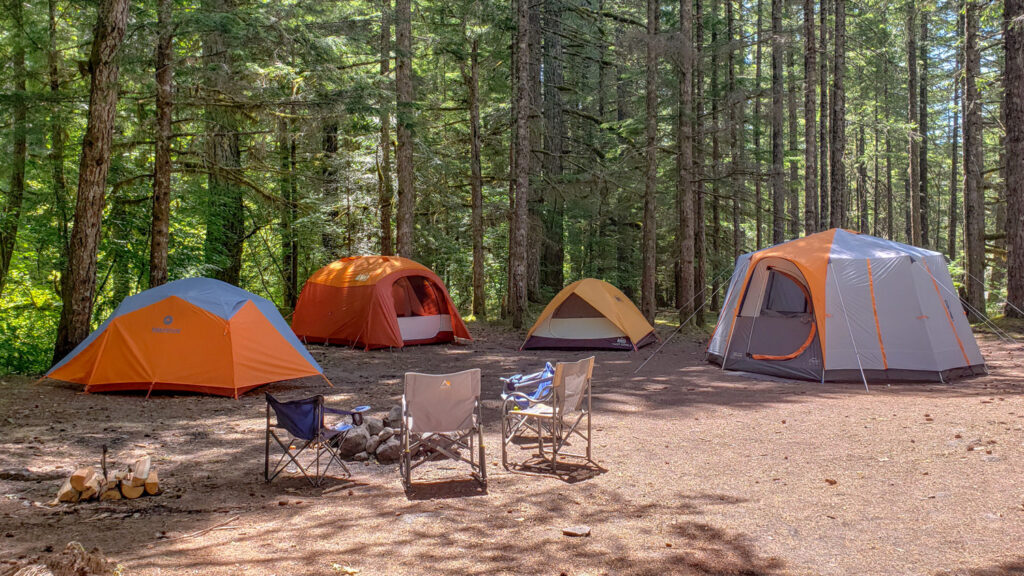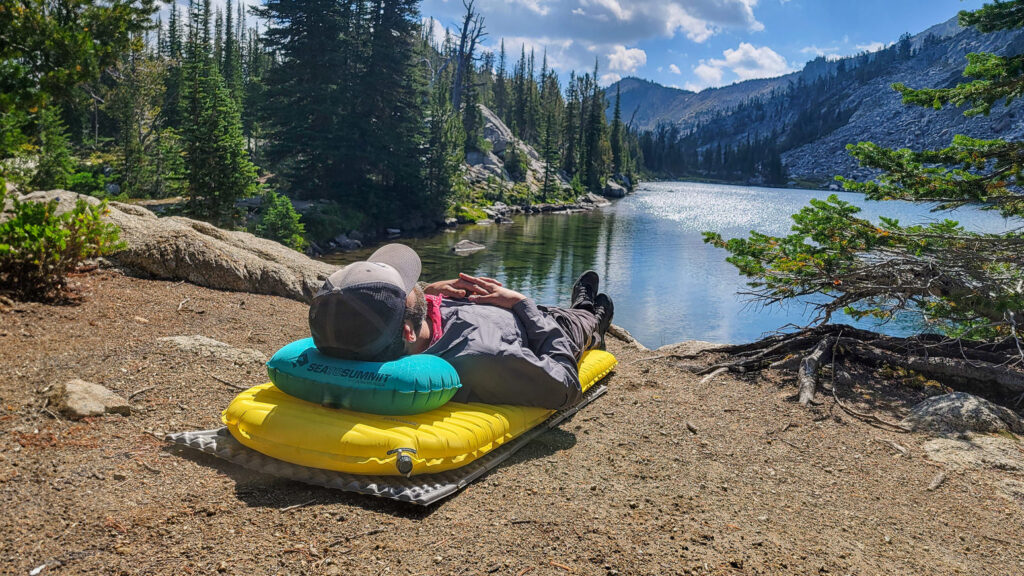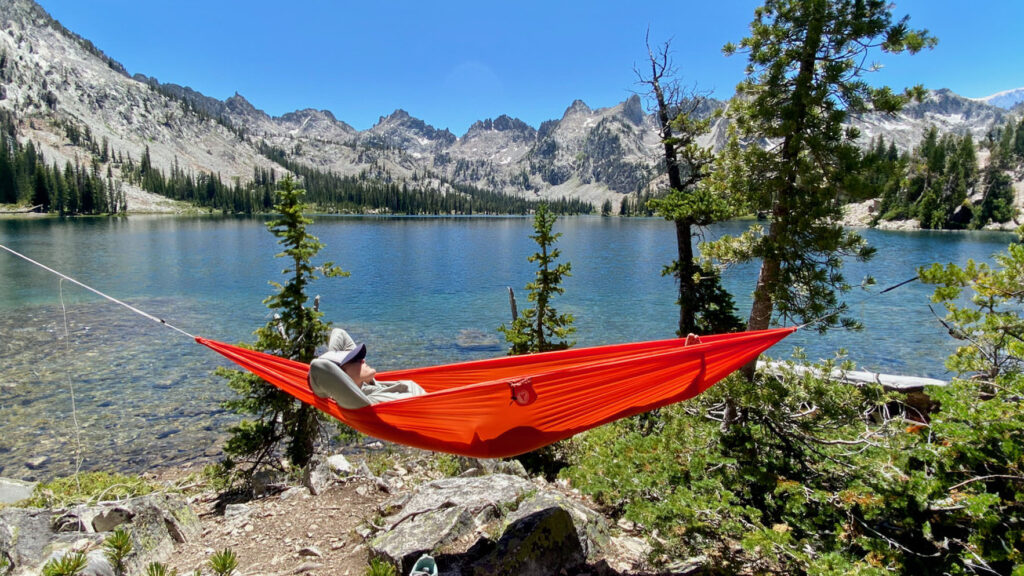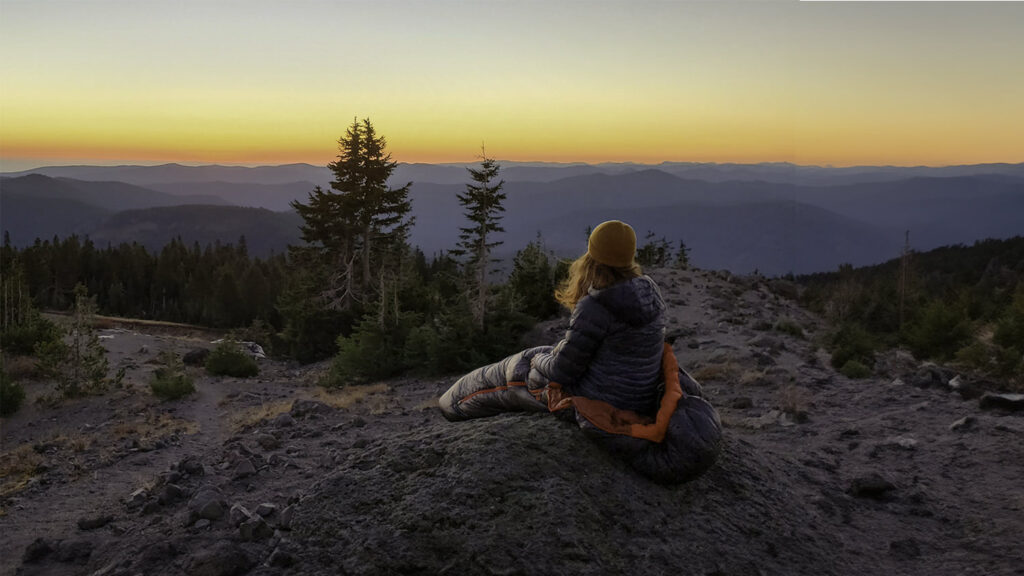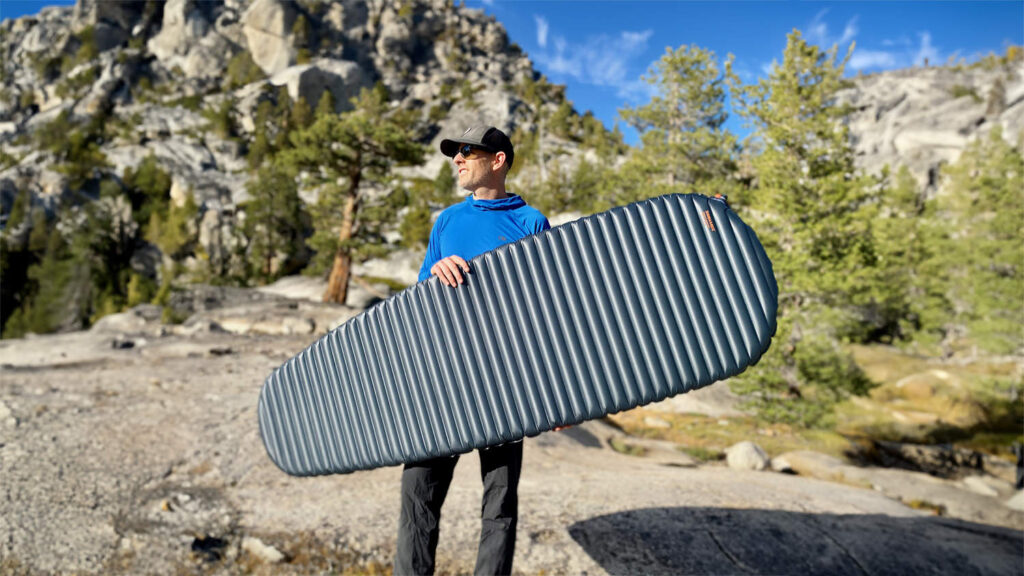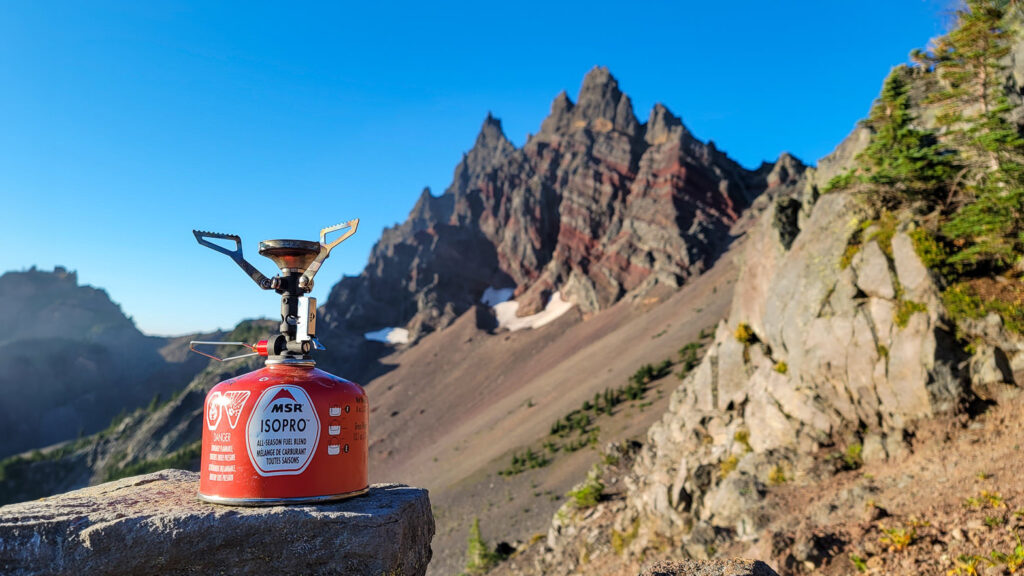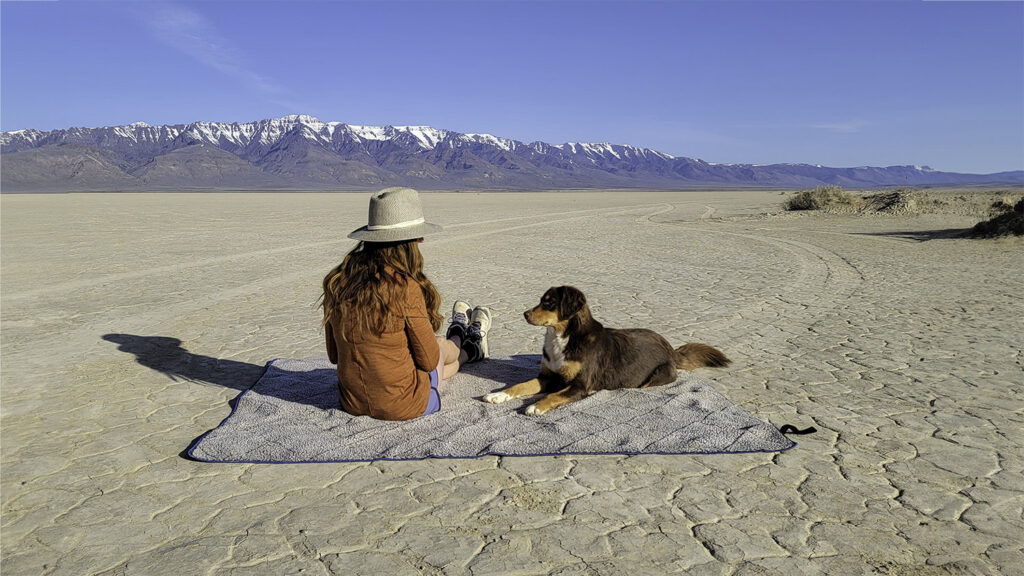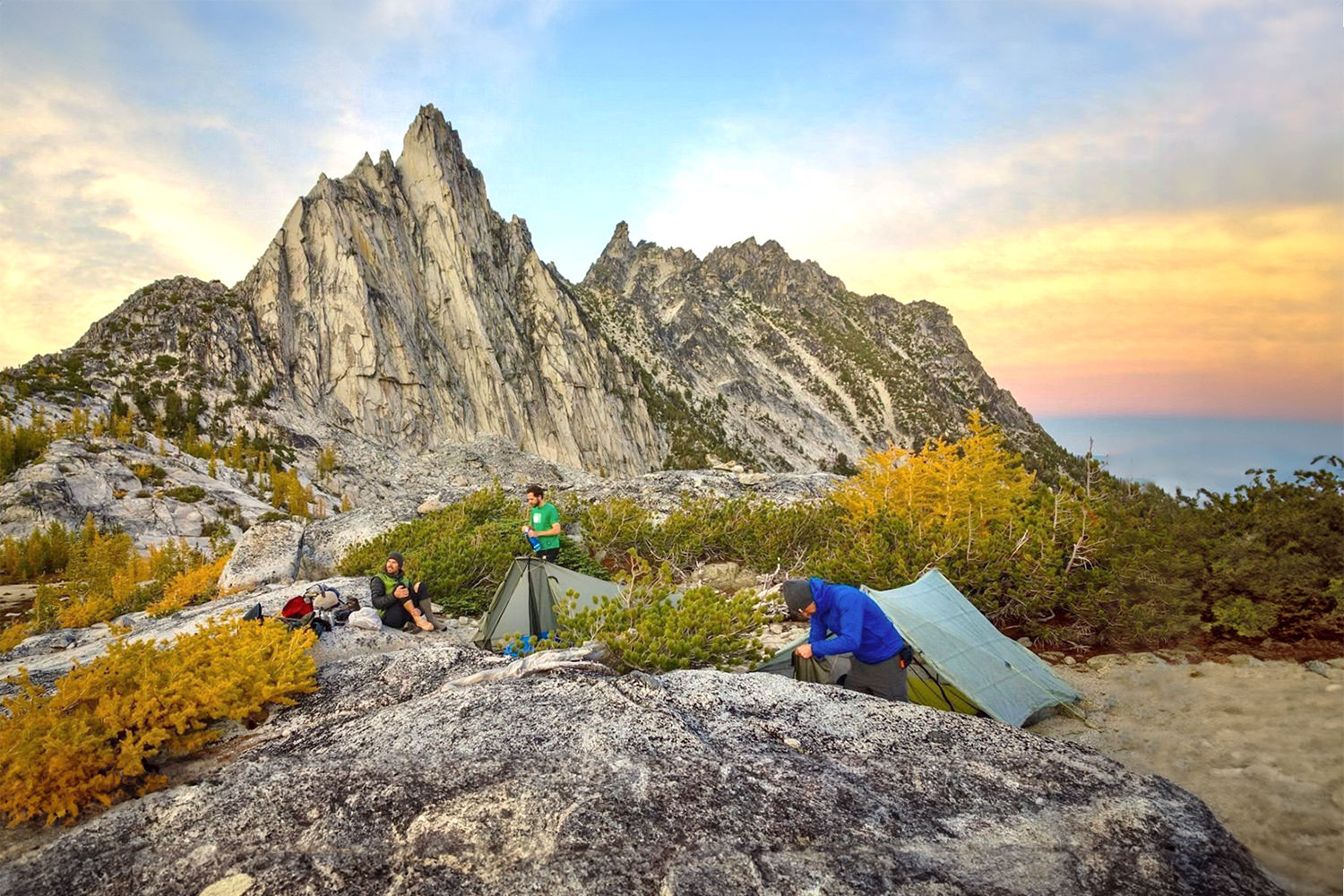
Opting for an ultralight tent is one of the easiest ways to lower your pack weight. From tarps to bivvies and tents, we’ve trail-tested over 50 different ultralight shelters during more than 1,000 nights in the backcountry.
An ultralight tent can be a big investment, so we’ll share our extensive knowledge in this guide to help you find the best ultralight tent for your needs.
If you aren’t ready to commit to the UL life, no worries. There are plenty of lightweight options to choose from in our guide to the best backpacking tents. It’s all about tradeoffs, so you can cut weight from your sleep system with one of our favorite quilts instead of a traditional sleeping bag. We also share some of our all-time favorite ultralight backpacks in our best backpacking backpacks guide.
Quick Picks for Ultralight Tents
Check out this quick list of our favorites, or continue scrolling to see our full list of the best ultralight tents with in-depth reviews.
Best ultralight tent overall: Zpacks Duplex ($699) / Triplex ($799)
Best budget ultralight tent: Six Moon Designs Lunar Duo ($395)
Best 1-person ultralight tent: Six Moon Designs Lunar Solo ($260)
Best freestanding ultralight tent: Big Agnes Copper Spur HV UL2 ($530)
Ridiculously lightweight tent with ample headroom: Gossamer Gear The Two ($320)
Versatile tarp with a clip-in inner net: Six Moon Designs Haven ($375)
Good balance of low weight & livability: MSR FreeLite 2 ($450)
Most spacious & weather-worthy ultralight tent: Hyperlite Mountain Gear Ultamid 2 ($699)
Most affordable ultralight tent: 3F UL Gear Lanshan 2 ($188)
Excellent performance in wet weather: Tarptent Double Rainbow ($299)
What’s new
The CleverHiker team has been hard at work analyzing some new ultralight shelters as well as putting our old favorites through more durability testing.
- The Zpacks Duplex remains our number one pick for its low weight, durability, and spaciousness.
- The Six Moon Designs Lunar Duo has long been a top pick of ours, and it now boasts the title of best budget ultralight tent.
- Gossamer Gear’s The Two – another affordable favorite – has climbed the rankings to take the number four spot on our list.
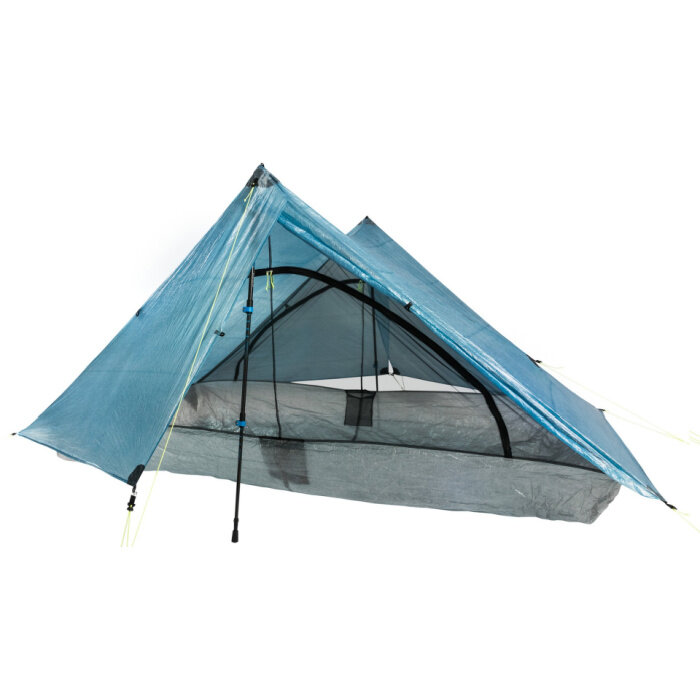
Zpacks Duplex & Triplex
Best ultralight tent overall
Price: $669 (Duplex)
Weight: 1 lb. 2.5 oz. (no stakes or poles)
Dimensions (LxWxH): 90 x 45 x 48 in.
Pros
- Ultralight
- 2 door/vestibules
- Ample space for two (Triplex)
- DCF material won't sag when wet or soak up water
- Trekking poles can double as tent poles
- Seams are factory-taped
Cons
- Expensive
- Condensation management necessary for single-wall tents
The Zpacks Duplex and Triplex are among our all-time favorite ultralight tents for thru-hiking and fast and light adventures. These tents provide an excellent amount of interior space and weather protection while being freakishly lightweight. The DCF material makes these tents pretty expensive, but it’s also why they’re so light, fully waterproof, durable, and don’t sag when wet. We like to use the Zpacks carbon fiber poles (sold separately) with our Plex for convenience, but you can save even more weight by using trekking poles as the tent structure. We’re partial to the Duplex for solo hikes and the Triplex for more interior space when hiking with a partner.Check out our full review of the Duplex here and the Triplex here.
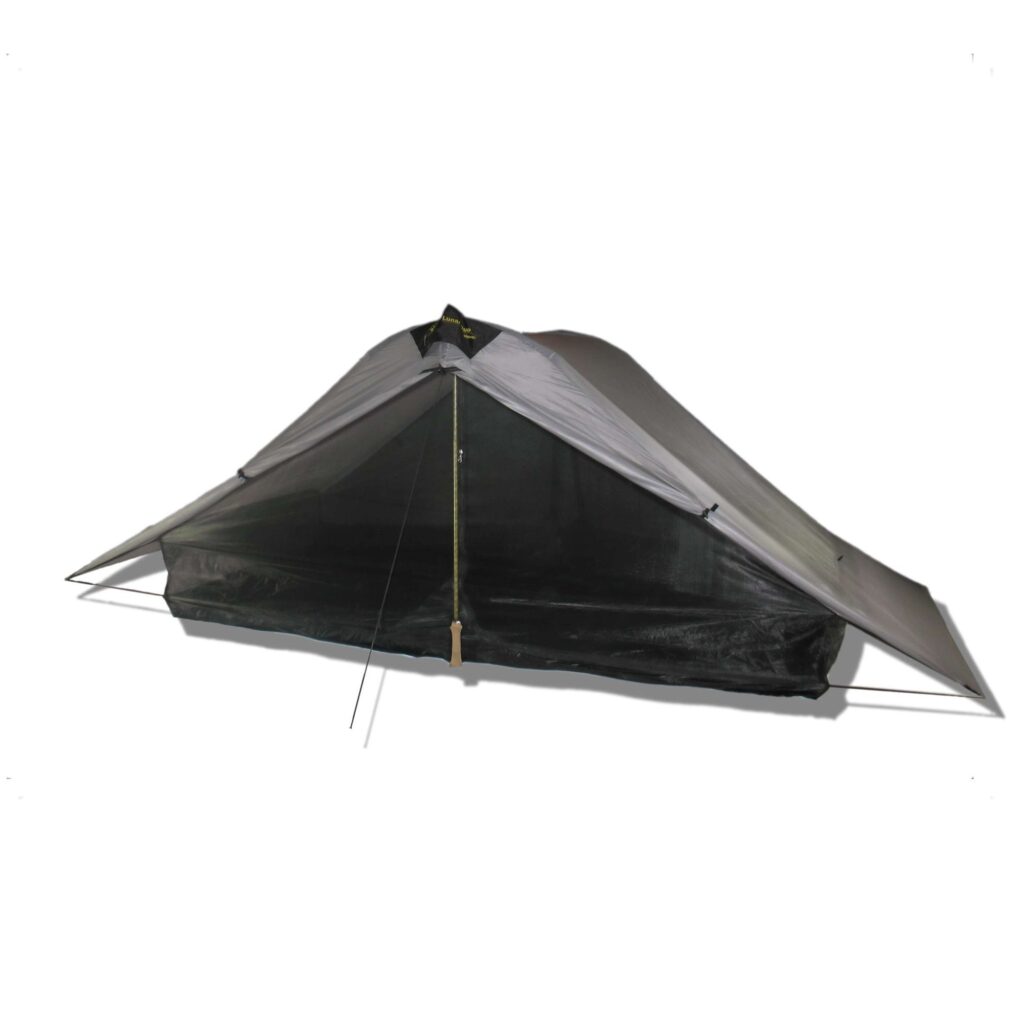
Six Moon Designs Lunar Duo & Solo
Best budget ultralight tent
Price: $395 (Duo)
Weight: 2 lb. 13 oz. (no stakes or poles)
Dimensions (LxWxH): 90 x 54 x 45 in.
Pros
- Spacious
- Excellent Value
- Small packed size
- Durable
- Ample headroom
- Excellent ventilation
- 2 door/vestibules
Cons
- Heavier than some
- Seam sealing costs extra
- Condensation management necessary for single-wall tents
The Six Moon Designs Lunar Duo is the best value tent on our list due to its excellent balance of space, weight, and durability. We’ve put the Lunar Duo through the wringer on multiple thru-hikes, and it held up like a champ in all kinds of conditions. It’s a bit heavier than the similar Gossamer Gear The Two and Zpacks Duplex, but it’s one of the most spacious tents on our list with plenty of room for two people and their gear. One thing that makes the Lunar Duo unique is that the guylines can be re-tensioned from inside the tent, which is really convenient during rain. The large vestibules are designed to open completely without disturbing the structure of the tent, so you can have similar ventilation and view benefits of a double-wall tent. Check out our full review of the Lunar Duo here.
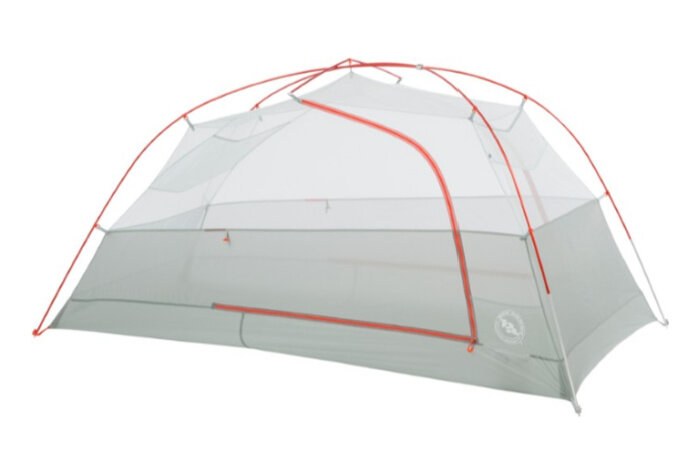
Big Agnes Copper Spur HV UL2 & UL3
Best freestanding ultralight tent
Price: $550 (UL2)
Weight: 3 lb. 2 oz.
Dimensions (LxWxH): 88 x 52/42 x 40 in. (wider at head)
Pros
- Spacious
- Quick/Easy to pitch
- Great pockets
- 2 large doors/vestibules
- Quality construction/materials
- Freestanding
- Double-wall is better for condensation management
- Seams are factory-sealed/taped
Cons
- Slightly less durable than some tents
- Rainfly zippers can snag
- A bit pricey
- Heavier than some
The Big Agnes Copper Spur HV UL2 and UL3 are among the heaviest tents on this list, but their excellent balance of interior space and weather protection is worth the extra ounces if you’re looking for something easier to use. Their freestanding design makes choosing a camp spot much easier, and setup is a lot quicker than many other ultralight tents. If you’re okay with a tighter interior or you often backpack solo, the UL2 is an excellent choice. For pairs, we suggest bumping up to the UL3, which has more interior space and only weighs 13 ounces more. Check out our full review of the Copper Spur HV UL2 here.
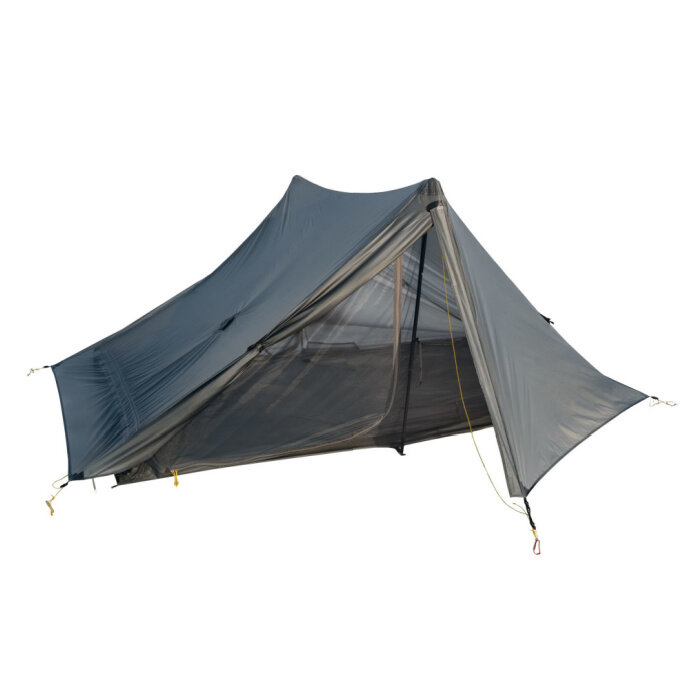
Gossamer Gear The Two & The One
Ridiculously lightweight tent with ample headroom
Price: $320 (The Two)
Weight: 1 lb. 7.5 oz.
Dimensions (LxWxH): 84 x 48/42 x 43 in. (wider at head)
Pros
- Ultralight
- Small packed size
- Ample headroom
- 2 doors / vestibules (The Two)
- \Seams are factory-taped
Cons
- Thin material isn’t as durable as some & can sag in really wet conditions
- Condensation management necessary for single-wall tents
The Gossamer Gear The Two is one of the lightest tents on our list, and it’s amazingly comfortable inside for being so minimal. It’s quick and easy to pitch – even if you’re solo, and the setup provides a generous amount of headroom. Because the material of The Two and The One is pretty thin, it tends to stretch quite a bit in wet weather. This means you may have to re-tension the guylines during sustained bouts of heavy rain. That said, the thin material is part of what makes these tents so incredibly light and compact. We typically prefer the extra space of The Two, but The One is great for solo hikers who want to go lighter. Check out our full review of The Two here.
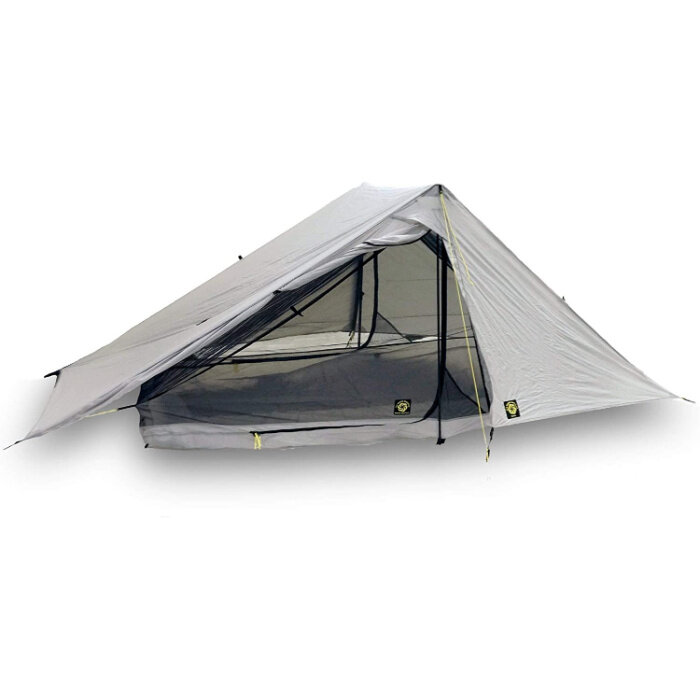
Six Moon Designs Haven
Versatile tarp with a clip-in inner net
Price: $375
Weight: 2 lb. 6.1 oz.
Dimensions (LxWxH): 88 x 44 x 45 in.
Pros
- Affordable
- Versatile
- Small packed size
- Durable
- 2 door/vestibules
Cons
- Seam sealing costs extra
The Six Moon Designs Haven is one of the best value tents on this list. It comes with a tarp and an inner net that can be used together for a full tent setup, or separately to save weight and adapt to conditions. The Net Tent is hung from the tarp instead of being supported by poles which makes it easy to set the tarp up first in bad weather. This means you can keep the inner net packed away and dry until you’re ready to clip it in. One of our favorite things about the Haven is that you can adjust the tension on the straps from the inside – no more getting out of your tent in the rain to adjust sil-nylon sag. The Haven is perfect for hikers on a budget who like having the versatility of a tarp and the option for protection with the net insert.
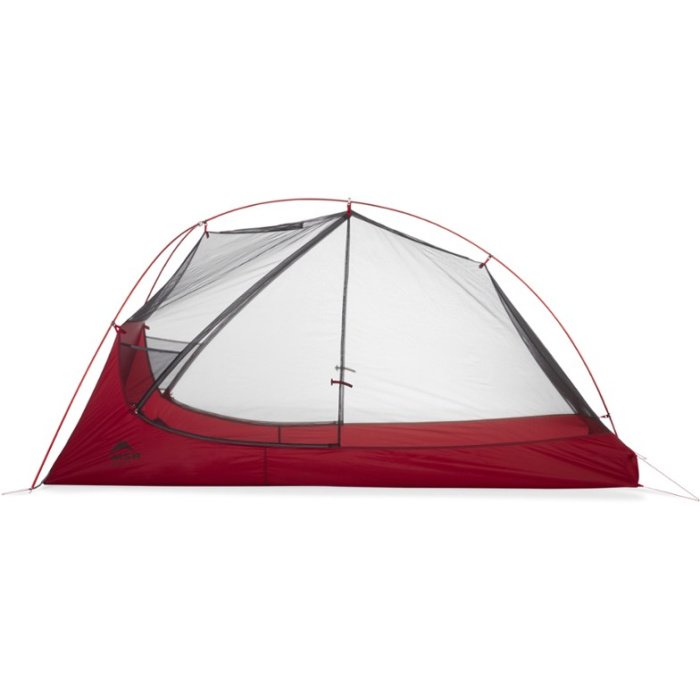
MSR FreeLite 2
Good balance of low weight & livability
Price: $450
Weight: 2 lb. 5 oz.
Dimensions (LxWxH): 84 x 50 x 39 in.
Pros
- Good value
- Durable
- Two doors / vestibules
- Good space for a solo hiker
- Excellent pockets
- Rainfly gutter prevents drippy entry
Cons
- Semi-freestanding
- A little tight for two
The MSR FreeLite 2 is a great option for those looking to go a little lighter without sacrificing the protection of a double-wall tent. It has two large doors, two roomy vestibules, and the interior space feels more generous for two hikers than other similarly designed tents. A few creature comforts, like well-placed pockets and a rainfly gutter, make the FreeLite particularly appealing for any backpacker looking for the best balance of low weight, livability, and weather protection. Due to its larger interior space, the FreeLite edged out the NEMO Hornet 2 that had long been on our list.
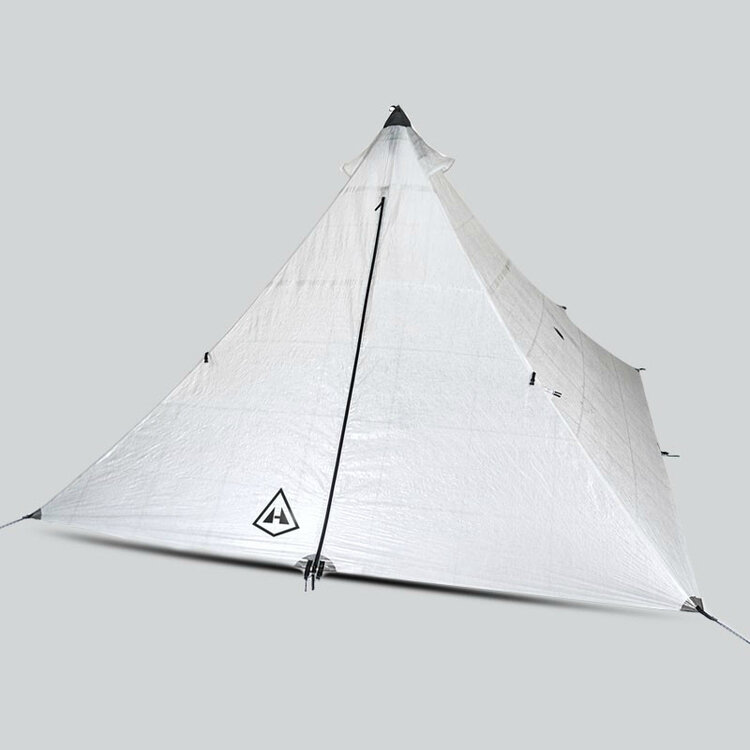
Hyperlite Mountain Gear Ultamid 2
Most spacious & weather-worthy ultralight tent
Price: $699
Weight: 1 lb 2.9 oz.
Options: Mesh Insert
Dimensions (LxWxH): 107 x 83 x 64 in
Pros
- Ultralight
- Spacious
- Excellent weather protection
- Versatile
- Durable
- Good ventilation
- DCF material won't sag or soak up water when wet
- Seams are factory-sealed
Cons
- Very expensive
- Bulkier than some if you bring the tent and mesh insert
- Takes more practice to pitch than some others
So many ultralight tents save weight by cutting out living space, but that’s not Hyperlite Mountain Gear’s style. The featherlight Ultamid 2 is an absolutely enormous pyramid tarp that comfortably shelters two people and their gear. The tarp alone provides ample protection from the elements, but we recommend purchasing the Full Mesh Insert if you want some extra defense against bugs and muddy gear. The Ultamid is the only 4-season tent on this list, and the pyramid shape provides excellent protection from wind, rain, and snow. While this tent comes with a pretty big price tag, the livability, durability, and low weight make it totally worth it if you backpack often.Check out our full review of the Ultamid here.
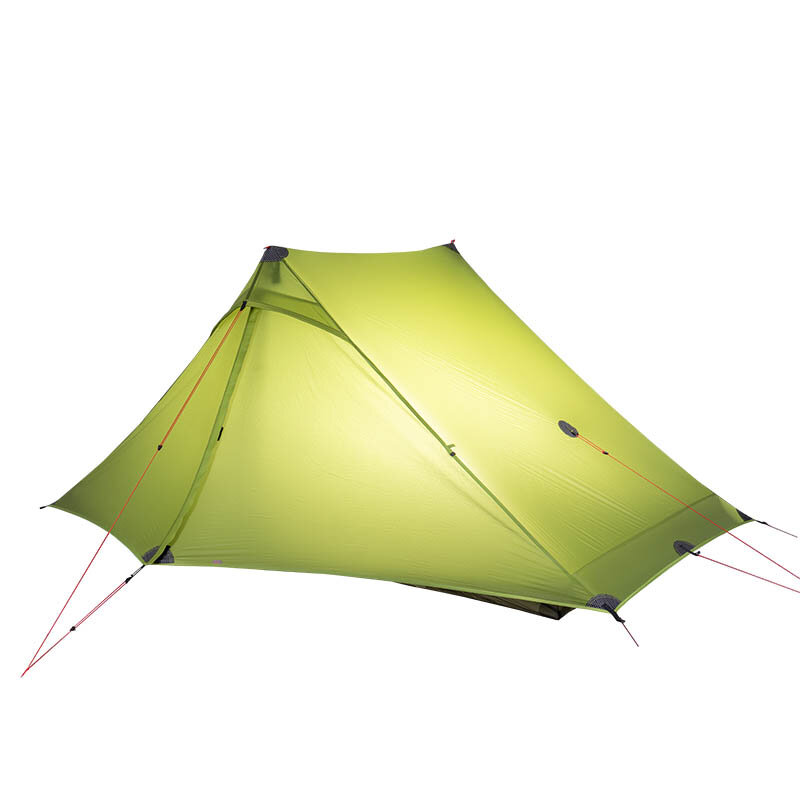
3F UL Gear Lanshan 2
Most affordable ultralight tent
Price: $188
Weight: 2 lb. 8.7 oz.
Dimensions (LxWxH): 82.5 x 43 x 49 in.
Pros
- Affordable
- Good headroom
- 2 doors / vestibules
Cons
- Not as durable
- Not as spacious as some
- Heavier than some
- Some seams neeed to be sealed for full waterproofing
- Condensation management necessary for single-wall tents
The 3F UL Gear Lanshan 2 is one of the most affordable tents we’ve ever tested, and we were pleasantly surprised by its performance. It’s very similar to the Six Moon Designs Lunar Duo, but it’s a little smaller, heavier, and less durable. That said, the Lanshan costs less than half the price of the Lunar Duo and, if you add a groundsheet, will still be reliable for multiple seasons. Since it’s a bit less durable, we wouldn’t recommend the Lanshan for a thru-hike, but the price can’t be beat for couples and solo hikers on a budget.
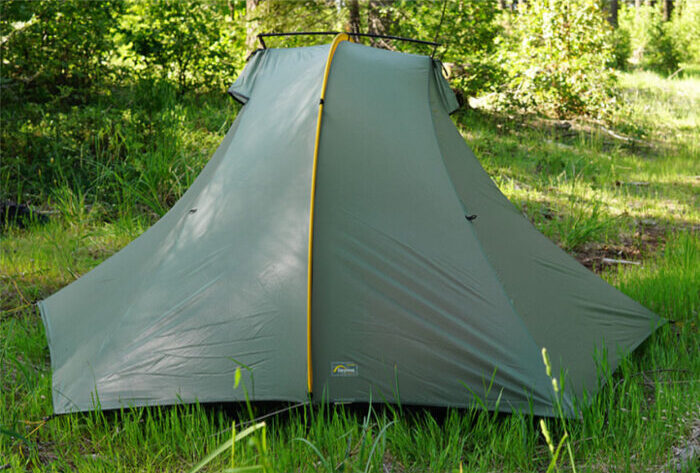
Tarptent Double Rainbow
Excellent performance in wet weather
Price: $299
Weight: 2 lb. 10 oz.
Dimensions (LxWxH): 88 x 52 x 42 in.
Pros
- Durable
- Solid weather protection
- Easy to set up
- 2 doors / vestibules
- Interior liner accessory cuts down on condensation
Cons
- Tight space for 2 with little headroom
- Requires seam sealing to be waterproof
- Not as ventilated as others
The Tarptent Double Rainbow has a unique design that holds up well in high winds and heavy rain. The rainbow shape of this tent cuts out some head room, but is really effective at preventing rain from pooling up on top of your tent. Interior condensation buildup can be frustrating in single-wall tents during cold, rainy weather, so we really love that Tarptent gives the option to add an interior liner to help keep water from dripping on you and your gear. If you do a lot of backpacking in soggy climates, the Double Rainbow is a great tent at a value price for two hikers.
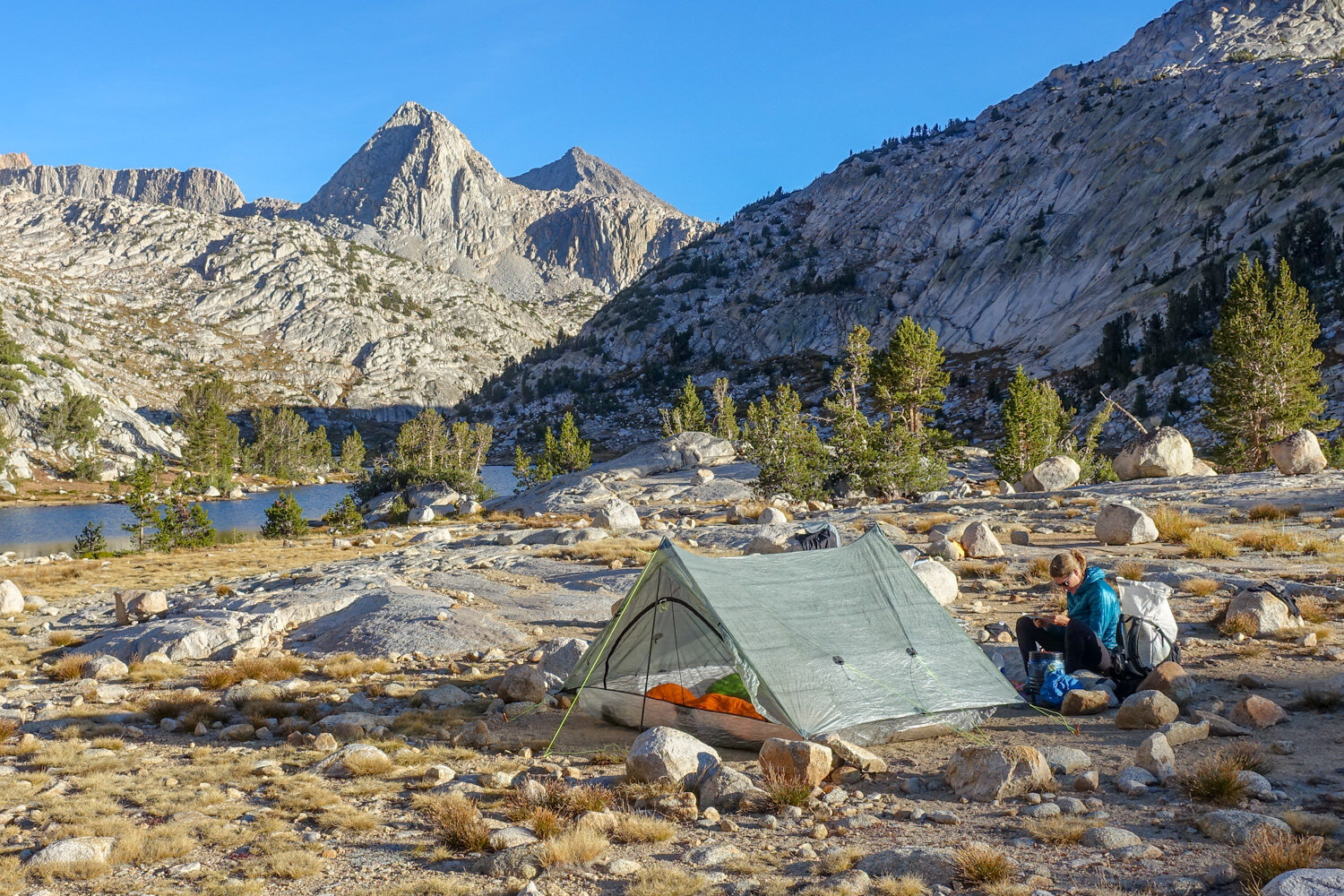
Product Comparison Table
| oSort | Product | Price | Weight | Dimensions (LxWxH) |
|---|---|---|---|---|
| 0 |
Zpacks Duplex & Triplex View Duplex View Triplex |
$669 (Duplex) | 1 lb. 2.5 oz. (no stakes or poles) | 90 x 45 x 48 in. |
| 1 |
Six Moon Designs Lunar Duo & Solo View Lunar Duo View Lunar Solo |
$395 (Duo) | 2 lb. 13 oz. (no stakes or poles) | 90 x 54 x 45 in. |
| 2 |
Big Agnes Copper Spur HV UL2 & UL3 View UL2 View UL3 |
$550 (UL2) | 3 lb. 2 oz. | 88 x 52/42 x 40 in. (wider at head) |
| 3 |
Gossamer Gear The Two & The One View The Two View The One |
$320 (The Two) | 1 lb. 7.5 oz. | 84 x 48/42 x 43 in. (wider at head) |
| 4 |
Six Moon Designs Haven View at Six Moon Designs |
$375 | 2 lb. 6.1 oz. | 88 x 44 x 45 in. |
| 5 |
MSR FreeLite 2 View at Backcountry View at Amazon |
$450 | 2 lb. 5 oz. | 84 x 50 x 39 in. |
| 6 |
Hyperlite Mountain Gear Ultamid 2 View at HMG View at Garage Grown Gear |
$699 | 1 lb. 2.7 oz. | 107 x 83 x 64 in. |
| 7 |
3F UL Gear Lanshan 2 View at Amazon |
$188 | 2 lb. 8.7 oz. | 82.5 x 43 x 49 in. |
| 8 |
Tarptent Double Rainbow View at TarpTent |
$299 | 2 lb. 10 oz. | 88 x 52 x 42 in. |
What’s Most Important to You in an Ultralight Tent?
PRICE
The lightest tents tend to be the most pricey, because they’re made with special materials and techniques to shave every ounce possible. If saving weight is your main priority, it may be worth it to stretch your budget a bit to get the lightest tent possible.
That said, every tent on this list is impressively light and many of the sub-$500 tents on our list can last you for thousands of miles if treated with care.
Livability and low weight usually trump cost in our books since we do a lot of backpacking, but we recommend quality options for every budget in our top picks below.
Best value ultralight tents
Best high-end ultralight tents
Best budget ultralight tents
WEIGHT
Your tent will be one of the heaviest items in your pack, so keeping the weight as low as possible will make for a more enjoyable experience. A lighter tent will be more comfortable to carry for long hauls, but going with a slightly heavier tent often means an increase in durability.
To get the best of both worlds – low weight and durability – look for a shelter made with DCF fabric. DCF is incredibly strong for its weight, so these are the ultralight tents we usually prefer for long trips.
Lightest ultralight tents
Most durable ultralight tents
SPACE
Going light doesn’t have to mean sacrificing livability – many of the UL shelters on our list are incredibly spacious despite their low weight. Having ample space in your tent will make it much easier to stay comfortable and keep your gear dry.
This is especially important for hiking duos since you’ll want room to accommodate two sets of gear. Pay special attention to the width of the tent you intend to buy to ensure it will fit two sleeping pads side-by-side if one or both of you uses a wide pad.
Most spacious ultralight tents
DURABILITY & WEATHER PROTECTION
A sturdier tent that holds up in bad weather will likely weigh a bit more, but the extra weight can be worth it for those that’re hard on gear or who frequently backpack in harsh climates.
That’s not to say you can’t hit the trail in inclement weather with one of the lighter shelters on our list, though. Shelters made with DCF are a great option for hikers hitting the trail in areas with unpredictable conditions. DCF is inherently waterproof, doesn’t sag when wet, and holds up well in high winds.
Most durable & weather-worthy ultralight tents
BEST ULTRALIGHT 1-PERSON TENTS
1-Person tents usually have only one door/vestibule and can be a pretty tight fit, but weigh next to nothing and are very compact. As a side note, we sometimes bring a 2-person tent for solo adventures because we like the extra wiggle room and the convenience of two doors and vestibules.
Best ultralight 1-person tents
Critical Ultralight Tent Considerations
TENT SIZE
The reality with tent sizes is that a lot of manufacturers exaggerate how many people can sleep comfortably in them. For example, many two-person tents are a tight fit for two average-sized people. If you plan on sleeping two people in your tent and want more space, you may find a three-person tent to be more comfortable. Extra space will add weight, so you’ll need to decide if more wiggle room or a lower packed weight is more important to you. Check out our Tent Size Guide for more info on finding the right fit for you.
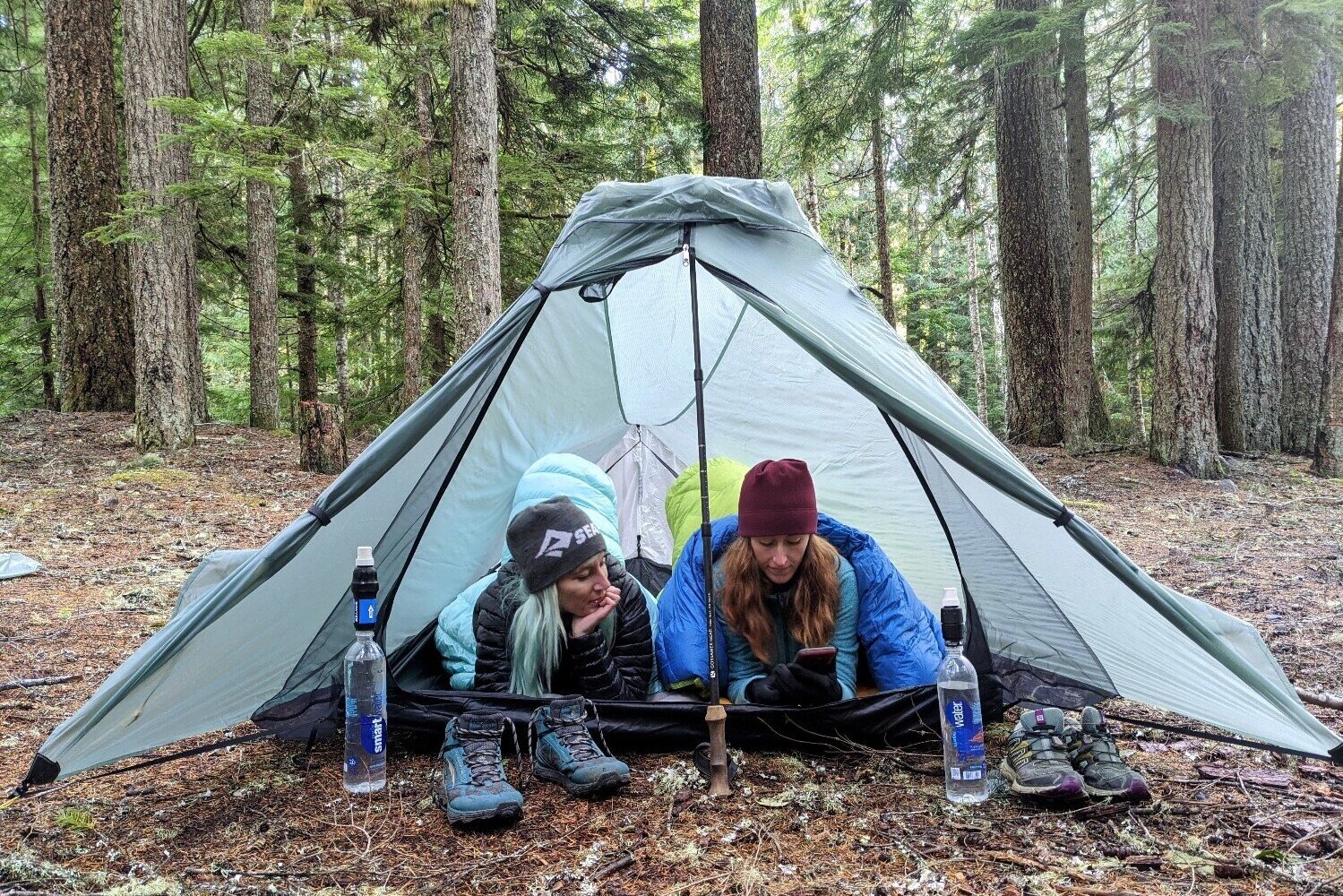
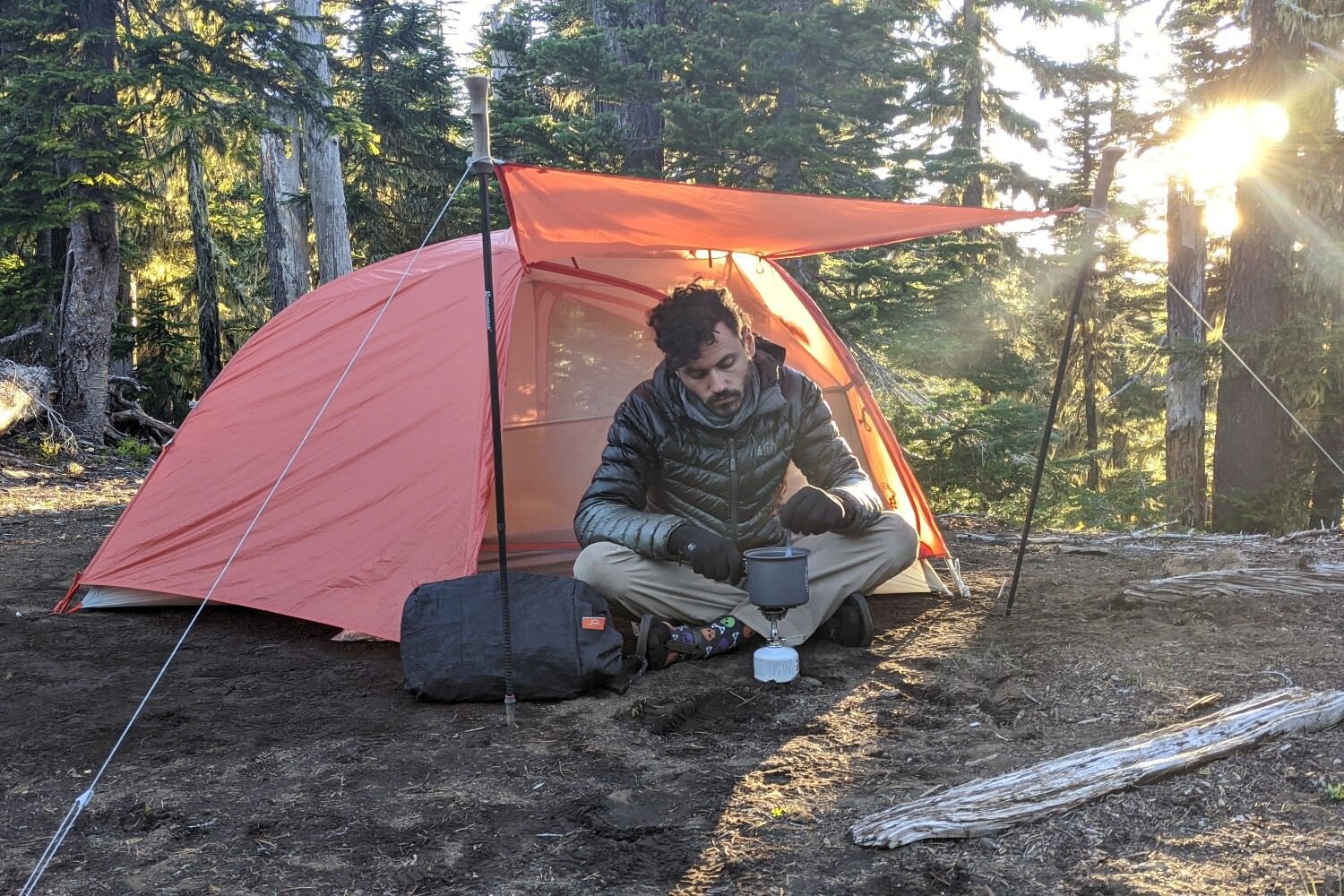
PACKAGED WEIGHT VS. MINIMUM TRAIL WEIGHT
You may see a couple different specs listed for weight when researching tents and it can get a little confusing. Some manufacturers may even leave components out of the weight spec (like a stuff sack or stakes) to make a tent seem lighter than it is. Unfortunately, there’s no industry standard for measuring tent weights, but these tips will help you get the accurate weight:
Packaged weight
Packaged weight will include all parts of a tent as well as any accessories it comes with off the shelf. This number usually gives the most accurate measurement to determine how much weight you’ll ultimately carry. After all, you’re going to be using tent stakes with your tent, right?
Minimum trail weight
This is where it gets tricky. Since there’s no set standard in the tent industry for calculating the minimum trail weight, some tent makers exclude more items than others from the measurement. Minimum trail weight will generally refer to the essential components needed to keep you dry. It will always include the tent body, rainfly, and poles. But it often excludes tent stakes (unless your tent is semi/non-freestanding), guy lines, and stuff sacks.
WEATHER PROTECTION
Many ultralight tents require some extra attention to detail when it comes to performance in bad weather. Your tent will provide the most protection when all guyout points are staked taut, and you should make sure any vents are propped open at night to help with condensation management. Sil-nylon tends to sag when wet, so tents made with this material may need to be re-tensioned in rainy conditions.
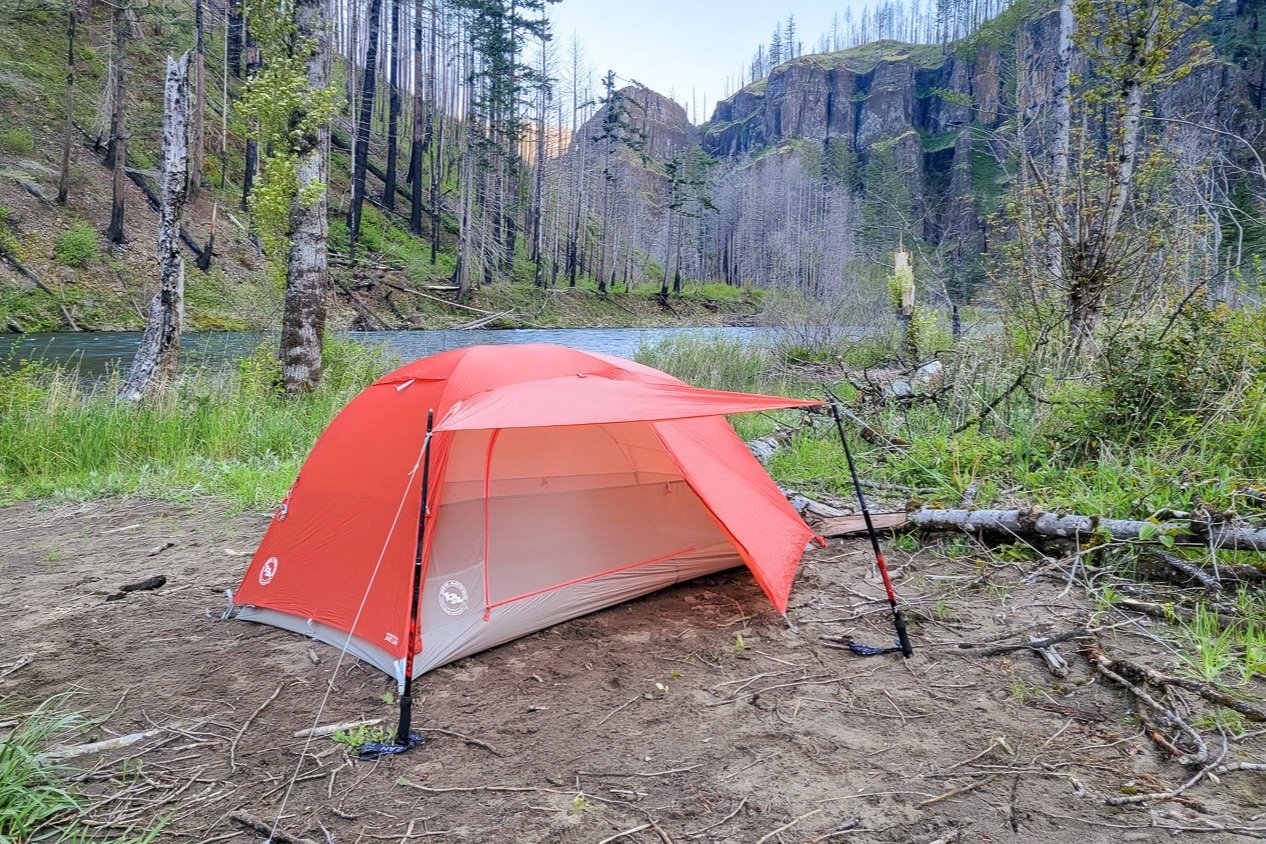
Some ultralight tent makers don’t seam seal their tents at the factory. You may have to pay extra for the manufacturer to do it, or you can always buy some seam grip and do it yourself.
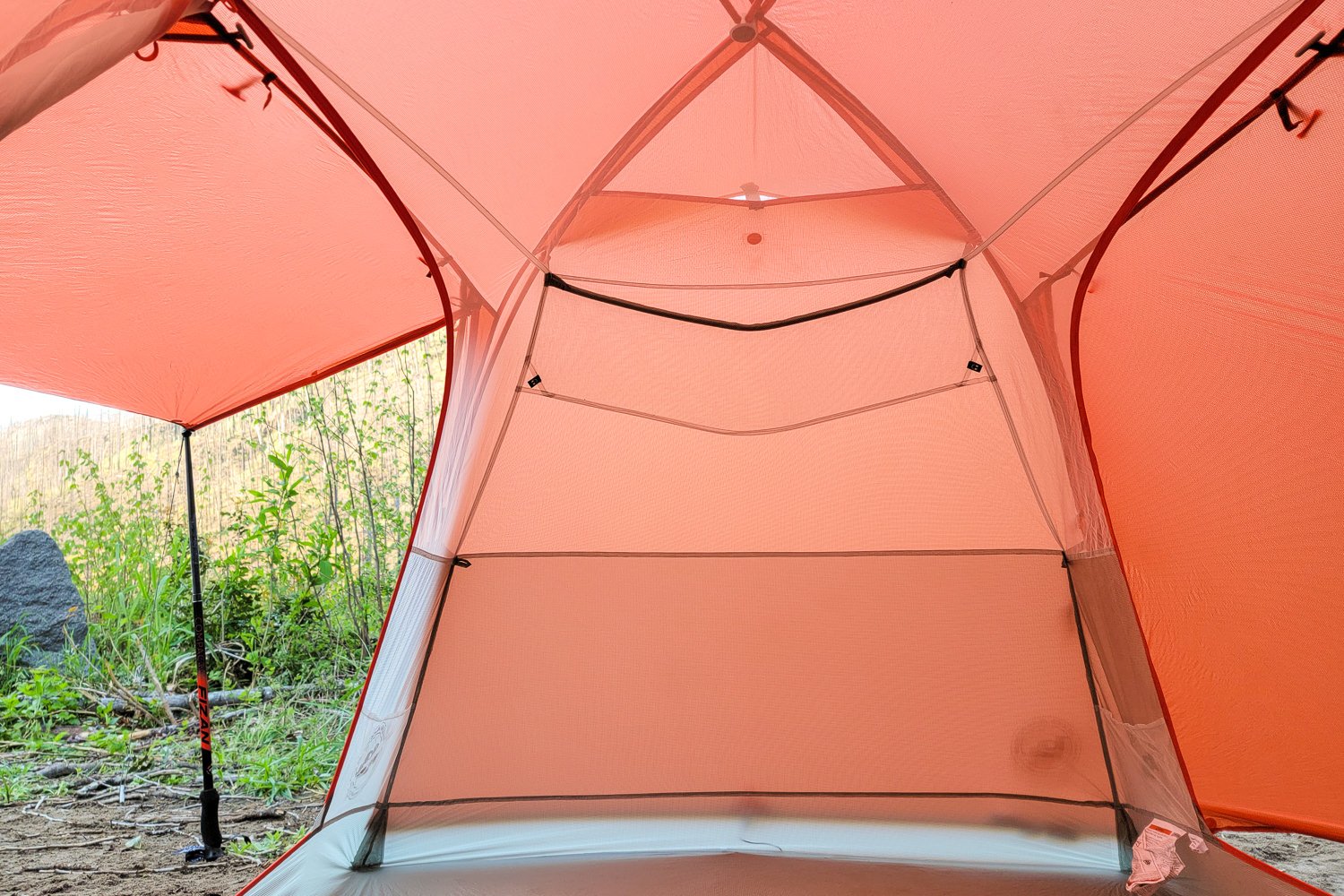
SEASON RATING
Three-season shelters are the most popular and widely available. They’re built for spring, summer, and fall trips where you’ll need to keep bad weather out while promoting ventilation to keep interior condensation to a minimum. Three-season tents can usually handle a little snow, but they’re not made for heavy snow or harsh winter conditions.
SETUP
Double-wall tents come with two separate parts – a mesh tent body and a rainfly. The mesh inner-tent acts as a barrier from condensation that forms on the inside of the rainfly. Single-wall tents (a majority of the shelters on this list) consist of mesh walls attached to a solid top flysheet – eliminating the separate mesh inner tent altogether. While this design cuts out a lot of weight, single-wall tents are more susceptible to condensation buildup inside. You can reduce the impact of condensation by staking all guylines out taut, sleeping with the vestibule doors open whenever possible, and making sure your sleeping bag/quilt isn’t rubbing up against the tent walls.
DOORS & VESTIBULES
If you plan on sleeping two people in your tent, it’s more comfortable to have two doors and two vestibules. Separate entrances mean you don’t have to climb over your tentmate or army crawl out of a front entry every time you want to get in or out of your tent. That’s a huge benefit, and it’s why almost all of our tent recommendations have two doors and vestibules.
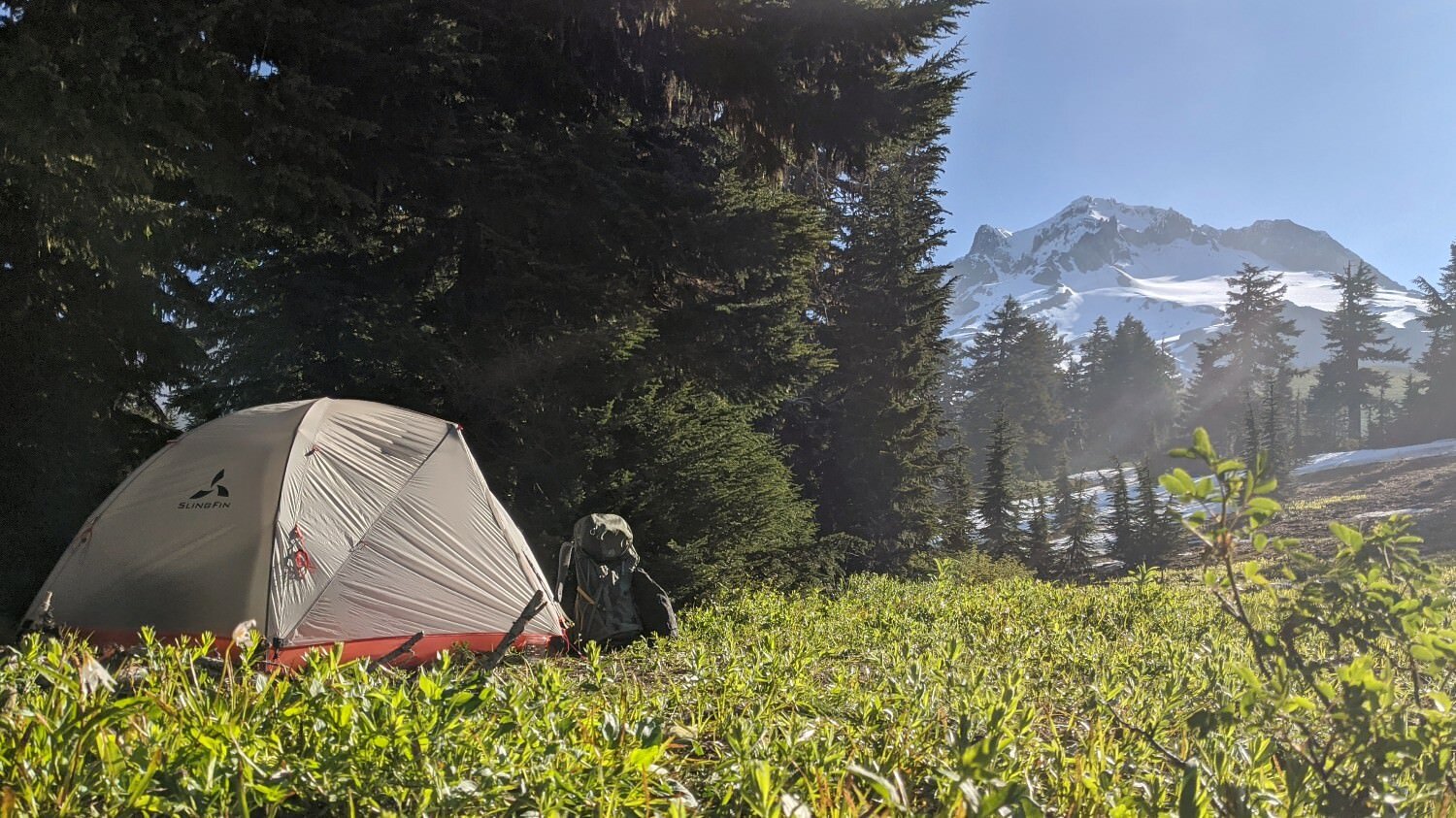
DURABILITY
The main trade-off with ultralight tents is that they’re built using thinner materials that tend to be less durable than heavy-duty shelters. Having said that, ultralight tents will literally last for thousands of miles if treated with care. It’s also important to remember that a sharp stick or rock will puncture just about any kind of tent fabric.
If you’re tough on gear and don’t want to deal with lightweight materials, we recommend going with one of our heavier picks and/or adding a footprint to increase the durability of your tent floor.
FOOTPRINTS/GROUNDSHEETS
The main benefit of a footprint is adding durability to the floor of your tent. Most tents don’t come with a footprint, and many ultralight backpackers view them as unnecessary. Check out our Do You Really Need a Footprint? post to help decide if you want to add one to your setup.
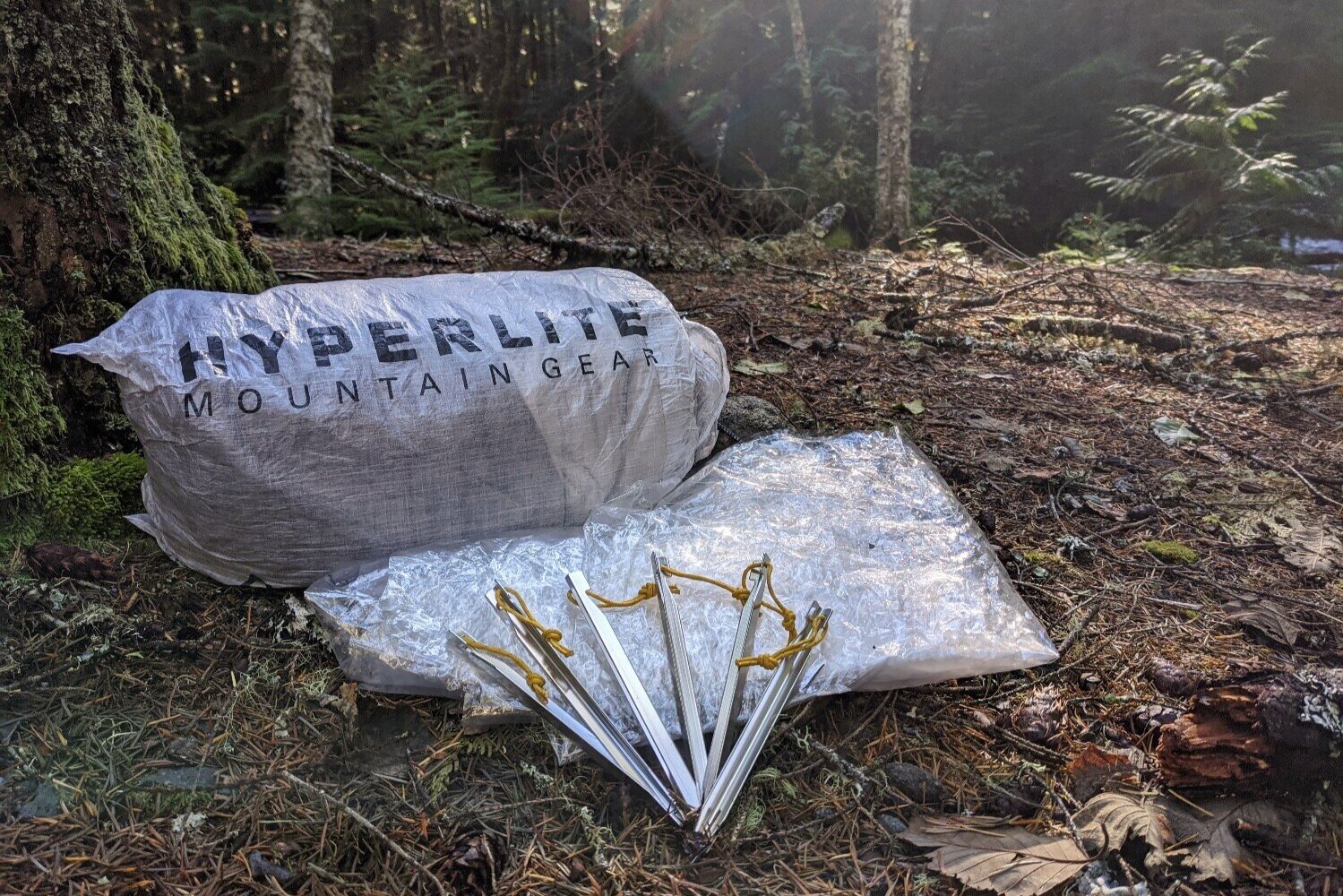
Lightweight groundsheets are near essential for use with tarps and bivvies. They have a variety of uses around camp and are extremely light and affordable. They can be purchased or easily constructed from online retailers or your local hardware store. Here are some of our favorite groundsheet options:
Polycro (4′ x 8′, 1.6 oz.)
Polycro is a plastic sheet that’s exceedingly durable for how thin and light it is. It’s not as durable as Tyvek (below), but it folds down smaller and is the lightest option available.
Tyvek Ground Cloth (4.5’ x 8’, 8 oz.)
Tyvek is another popular groundsheet material that is tough and highly water resistant, but it‘s slightly heavier and bulkier than plastic groundsheet alternatives. Tyvek is commonly used in home construction and you should be able to find it at your local hardware store. You can also purchase smaller quantities of it online.
Tent-specific footprints
Only a few ultralight tents on our list have the option to purchase specific footprints designed by the manufacturer. We typically don’t prefer this style because they’re far more expensive than polycro or Tyvek and are often much heavier.
Bivy Sacks
Bivy sacks are lightweight enclosures that provide just enough space to sleep in. They’re usually only slightly larger than your sleeping bag, but they can actually be quite comfortable if you don’t mind tight spaces. We recommend pairing your bivy with a tarp and groundsheet to maximize weather protection and durability. When choosing a bivy sack, make sure to go with a size that will be long and wide enough to fit your body and your sleeping pad.
Mountain Laurel Designs Superlight Bivy (5.5-7.3 oz.)
MLD’s Superlight Bivy has a Dyneema flooring option for extra water protection and reduced weight. Its large size provides room for thicker sleeping pads like the Therm-a-Rest NeoAir XLite.
Montbell Breeze Dri-Tech UL Sleeping Bag Cover (6.3 – 8.3 oz)
The material of Montbell’s Dri-Tec Sleeping Bag Cover provides excellent waterproof protection for cold and wet trips. The downside is that increasing water protection reduces breathability and allows condensation to collect inside your bivy. The Breeze also comes in a wide/long option that will be better for larger hikers. This model has a drawcord hood, but doesn’t have a net to keep the bugs out.
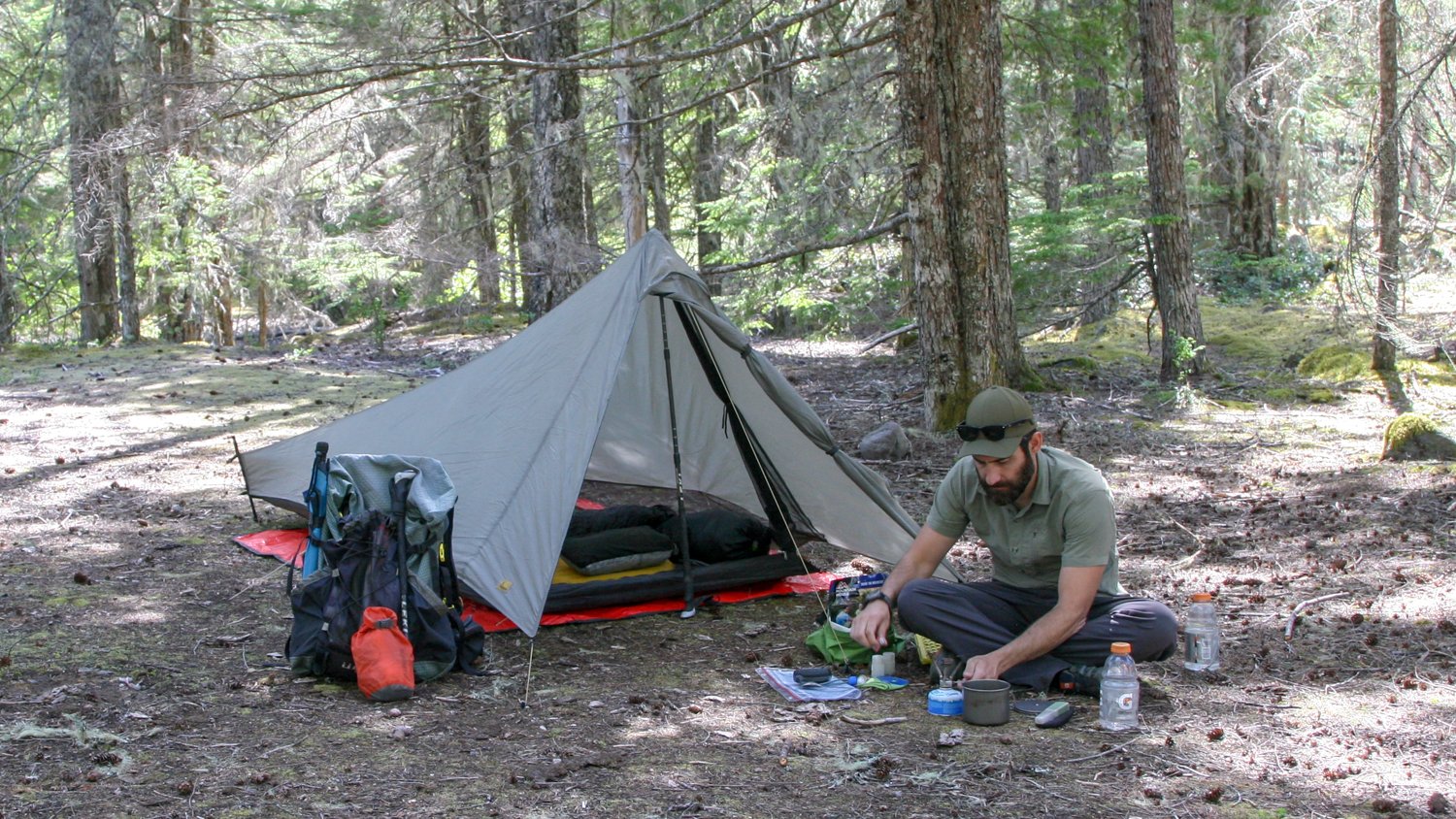
Honorable Ultralight Tent Mentions
The following ultralight tents didn’t make our final list, but they’ve still got a lot of good things going for them. You never know, one of these tents might be perfect for you:
Mountain Laurel Designs SoloMid XL
Ultralight pyramid tarp that’s much more affordable than other ‘mids. The Solomid is compact and provides good weather protection. We prefer the HMG Ultamid 2 because it’s larger, easier to set up, and the DCF material doesn’t sag when wet.
The Portal is maybe a bit heavy to be considered an ultralight tent, but we felt it deserved a mention because of its excellent strength-to-weight ratio. This tent is sturdy in inclement weather and has lasted us through many seasons of hard use.
The Hornet is a roomy option for solo hikers. It has two doors, two large vestibules, and a very small packed size. It’s a nice option for hikers who aren’t quite ready to go non-freestanding, but ultimately we prefer the similar but roomier MSR FreeLite 2.


